Today Zwift starts selling their first smart trainer, the Zwift Hub. Announced about a month ago, this ‘new’ smart trainer is essentially a repackaged JetBlack VOLT V2 trainer, but at a substantially lower price point than virtually every other direct drive trainer: $499. Most trainers with these specs tend to float in the $799-$999 price ballpark, thus making this potentially one of the best deals in the smart trainer world. However, Zwift has doubled down on this with a revamped setup ‘experience’ that aims to make it easy to get up and running, even if you know almost nothing about bike parts.
While we’ll get to all the nitty-gritty details in this review, it’s notable that this trainer isn’t limited to Zwift. It follows all of the ANT+ & Bluetooth Smart trainer/power standards, and works with any platform out there (for example, I’ve used it with TrainerRoad just fine). Further, while Zwift’s goal with this trainer is heavily focused on attracting new subscribers and recurring revenue to the platform, the company says it’s not selling this trainer for a loss – but is in fact making a small profit. I don’t doubt that, looking at OEM costs elsewhere, the pricing lines up. Keep in mind, Zwift isn’t selling this through retail channels, so they don’t have to account for a retail markup.
With that out of the way, I’ve been testing two different Zwift Hub media loaner units. The first back in August/Early September, which I wrote my initial hands-on piece about. That was then replaced with a different unit in mid-September, which I’ve used since. That new unit also includes the final firmware implemented to address some earlier accuracy issues I had (and it includes a different factory calibration process, which is why they sent new hardware just to be sure).
Both of these will go back to them once I’ve finished up here, as usual. If you found this review useful, consider becoming a DCR Supporter – which gets you behind-the-scenes videos and generally makes you awesome. With that – let’s begin!
The Specs:
First, just a quick run through the top-line specs, which are identical to the JetBlack Volt V2 because it’s the same hardware (something Zwift confirmed as well, there are no changes here):
– Direct drive trainer: This means you remove your rear wheel
– Flywheel: It has a flywheel weight of 4.7kg
– Cassette: A cassette is included, and you choose how many speeds (8/9/10/11/12) upon ordering on Zwift’s site. Which is then officially compatible with Shimano and SRAM drivetrains (unofficially, 11sp Campagnolo will also work on Shimano cassettes, just as many users do so today on JetBlack and other trainers)
– Sound: Essentially silent. Only the sound of your drivetrain is heard
– Handle: This unit lacks a handle, which continues to make it slightly awkward to move around
– Protocol Compatibility: ANT+ FE-C, ANT+ Power, Bluetooth Smart Trainer Control, Bluetooth Smart Power (everything you need)
– Unique Party Trick: Can rebroadcast your heart rate sensor within a single channel, ideal for Apple TV Zwift users (who are Bluetooth channel limited)
– App Compatibility: Every app out there basically (Zwift, TrainerRoad, Rouvy, RGT, The Sufferfest, Kinomap, etc…)
– Skewer Compatibility: All the skewers and adapters you could ask for: Road 130mm, 135mm, 142x12mm, 148x12mm
– Max Incline: 16% simulated grade
– Max Wattage: 1,800 watts resistance (or 1,300w @ 40KPH)
– Stated Accuracy: < +/-2.5%
– Power Cable Required: Yes, power block compatible with 100-240v
– Pricing and Availability: $499USD, £449, 499EUR
Note that the unit is the same regardless of which cassette is attached. Meaning, if you can’t find stock of the 12sp version, and you don’t mind buying your own 12sp cassette, you can buy a different version (e.g. 8sp) and simply swap the cassette.
Just for context, these specs are very similar to the Wahoo KICKR CORE, which costs $899 without a cassette (figure another $50 for that). The JetBlack VOLT, when sold with JetBlack branding was $849USD, or 749EUR (though, it went for about 700EUR street price, including an 11-speed cassette). However, since the Zwift announcement, JetBlack has dropped the price of the existing VOLT to match that of the Zwift Hub (i.e., $499 in the US).
Note that concurrently though, JetBlack announced a V2 version of the VOLT. That V2 version will shortly include a new automatic calibration feature that’ll also soon be coming to the Zwift Hub, to aid in better automatic calibration. Which then illuminates what is actually an interesting twist: The Zwift Hub is *actually* a JetBlack VOLT V2, which also includes some minor case-compatibility differences, as well as the automatic calibration algorithm. Specifically, JetBlack notes the V2 includes the following differences:
- [Hardware] Frame update (to avoid disc mount clashes)
- [Hardware] Add Keyway system to Pully axle (improved reliability)
- [Hardware] Up-spec of hardware used (improving performance)
- [Hardware] Updated speed sensor and position (improves overall accuracy and performance)
- [Software firmware update upcoming] Auto spin down
- [Software firmware update upcoming] Improved ERG support
- [Software firmware update upcoming] Improved speed of reporting
- [Software firmware update upcoming] Smart turn relay (Bridge for smart turning block)
However, fear not, many of these firmware changes are also coming to existing JetBlack VOLT V1 trainers, including the automatic calibration. The timeframe for that, according to JetBlack, is by the end of October.
In The Box:
When you order the Zwift Hub from Zwift, you choose your cassette type upfront. Simply put, the cassette type is how many speeds your cassette is (that’s the one at the back on the wheel). Most newer higher-end bikes are 12-speeds, most other bikes made in the last decade are 11-speed, and prior to that a blend of 8/9/10-speed. You can literally just count how many cogs you have on your cassette to determine this, it should take you no more than 12 seconds to complete this task. Though, I find it’s useful to do this task twice to be sure.
Fast forward a few days later when the Zwift Hub arrives, and you’ll find it in the above looking box. Crack that open, and it’s packaged up with an airbag giving it a hug:
Remove all that stuff, and you’ve got all the parts, notably with the cassette already installed.
Above you’ve got the trainer, two legs, some bolts, a pile of power cables, and some rear skewer/axle adapters. Oh, and a surprisingly detailed manual.
Zwift’s aim here was to make the mounting process simple, especially if you don’t know the difference between thru-axle and quick-release, or exactly which thru-axle length you have. Thus these colorful cards – specifically the pink/purple one, and the green one.
These two cards are designed to let you figure out exactly what size thru-axle or quick-release setup you have on your bike. The upper portion is a template that just slides into the rear drop-out of your bike, allowing you to instantly see which one you have.
The back of the cards show how to insert it into the back of your bike to double-check.
Next, when it comes to assembly, the Zwift Hub makes it easy to put the legs on correctly. I know this might sound silly, but trainer companies have a (very long) history of providing two near-identical, but not identical in length, legs that should be mounted in a specific spot, but can actually be mounted backwards or in the wrong spot. Also historically, trainer companies have almost never labeled these legs. So lots of people end up putting them in the wrong spot (forwards vs backwards), either the first time, or forever. It’ll usually work this way, except, it won’t be as stable – and you might tip over down the (virtual) road.
So Zwift added color coding to the legs, as well as made it such that if you put this on in the wrong orientation, then the ‘danger’ icon will be exposed. Whereas if you put it on correctly, then the danger icon is hidden under the foot.
The installation process takes perhaps 3 minutes, and involves simply four bolts. The trainer comes with the wrench required for this.
Once you install those four bolts, it should look like this:
Lastly, you’ll do the plugging in thing. As a responsible human in 2022, I’m going to assume you know how to plug a device into a wall outlet. However, while also a human in this millennium, with a gazillion electronic devices, I’m also going to assume that down the road you’ll move this trainer around your house/garage/whatever, and then might forget which power block goes to it – given it’s not labeled. Thus, here’s the back of the Zwift Hub power block in case you need to find it again.
As I’ve been doing for many years, take the sticker that’s in the box and stick it on your power block; that way you always know it goes with this trainer. Except, the Zwift Hub didn’t come with a sticker (or, I can’t find it). So instead, I made my own from the manual
See? Problem solved:
(The best part of this is that when I send it back, that manual will still have that gap in it…)
Finally, attach your bike. This will vary depending on whether you have thru-axle or quick-release. But you can merely follow the instructions on those cards to insert the correct adapters into the side of the trainer, followed by your bike, and then skewer. The key thing to know here is that this is a direct drive trainer, meaning your rear wheel is removed from the bike. This ensures there’s no slippage, while also reducing (basically eliminating) noise.
The Basics:
With the bike mounted on the trainer, and it plugged in, we’re essentially ready to ride. It’s worthwhile noting that the Zwift Hub doesn’t have any folding capability, so you can’t fold it up and stash it below a bed like some trainers. Though, it’s still pretty easy to stash in a closet as-assembled if you need to.
Now, with it plugged in you may have noticed the status light on the back of the trainer. This simply illuminates to tell you that it’s doing something, but unlike some other trainers, it’s not super specific (meaning no secondary lights for connectivity type or such). To be honest, in 99.99% of cases based on my experience over the past 15 years, you won’t care about separate connectivity types. Either the trainer is working (and there’s a light), or something is all effed up and likely beyond your control anyway.
Next, some people (like myself) like to use a front wheel block. You don’t need to, but I prefer it since it keeps my wheel from meandering all over the place. There’s both static ones (like shown here), or you can use turning ones. Some of these turning ones also do steering on Zwift, like the Elite Sterzo Smart. In fact, JetBlack (who makes the Zwift Hub) has an upcoming steering block as well.
Now, before we start riding, we should double-check the Zwift app for any firmware updates. This is done via the Zwift Companion App (which is the smartphone one). You’ll see a new option for Zwift hardware, and you can check/update it there:
Additionally, it’s here you can do heart rate bridging/pairing. This allows you to pair your chest strap with the Zwift Hub, and then get pass-through heart rate, so that the trainer handles the HR connection to the app on behalf of your strap. The main/singular reason you’d want to do this is for Apple TV usage of Zwift or other apps. That’s because Apple TV has a two concurrent connection limit (plus the remote). So if you wanted to do steering in Zwift, then this wouldn’t be possible since you’d have one connection for the trainer, and then one for your heart rate sensor (leaving none for steering).
But with HR bridging, the heart rate sensor data gets funneled in the same ‘channel’ as the trainer data, so it only counts as one channel – not two. You can simply search for your HR strap in this menu and then pair to it.
With that all settled, over on Zwift (or any other app) you’ll pair up to the Zwift Hub. You’ll pair it for power source, controllable trainer, and cadence. Plus heart rate if you want to:
You’ll notice Zwift has tweaked the pairing artwork to show a Zwift Hub trainer/logo.
Once that’s done, you can basically start riding Zwift. Or you can change the Zwift Trainer Difficulty level. This changes how the game simulates gradient. The default is 50%, meaning that if you see a 10% climb on the screen, it’ll actually only feel like a 5% climb. This won’t impact your in-game speed (since that’s based on wattage), but does impact how the climb feels to your legs, and which specific gearing you’ll use.
With all that said, let’s start riding. Given the Zwift Hub is a smart trainer (as opposed to a dumb trainer), it’ll change resistance automatically in a few different ways, primarily driven by different applications/methods. But most of this all boils down to two core methods:
ERG Mode: Setting a specific power level – i.e., 220w. In this mode, no matter what gearing you use, the trainer will simply stay at 220w (or whatever you set it to).
Simulation (SIM) Mode: Simulating a specific outdoor grade – i.e., 8% incline. In this mode, it’s just like outdoors in that you can change your gearing to make it easier or harder. Wattage is not hard-set, only incline levels.
In the case of simulation (aka slope) mode, the Zwift Hub can simulate from 0% to 16% incline – the same as the KICKR CORE. While other trainers can simulate above 20% these days, I continue to question how many people actually want to ride such a gradient. When I’m outside doing any road rides with more than about 12% gradient, it just sucks – let alone 14%, 16%, and more. A 24% incline? There’s just no reason I want to relive that scenario voluntarily indoors.
The second mode the trainer has is ERG mode. In that case, the company claims up to 1,800w of resistance. Although, realistically, you don’t care about that. I can only barely (maybe) break 1,000w for a second or two, and even most front of the non-pro pack cyclists aren’t going to top 1,800w. The pros would only be just a bit beyond that. Said differently: Peak numbers in this competition don’t matter. Instead, what matters is actually a harder metric to make clear – which is the ability to simulate high grades and lower speeds (especially if you’re a heavier cyclist).
One core test I do with all trainers though is responsiveness: How quickly does it respond to ERG mode changes? I typically do that with my 30×30 test via TrainerRoad, though it doesn’t really matter what method you use. For example, earlier today I did a slightly different variant of that test using Zwift. Here’s a look at a TrainerRoad one, where I’m going from 150w to 455w, over and over again:
In this case, very consistently, the trainer hit that wattage in 2 seconds. Which is pretty much right where I wanted it to be (any faster is actually too rough, and much slower than 4 seconds cuts into shorter intervals too much). Do note though that because of ERG Mode Smoothing on the Zwift Hub, there isn’t a definitive way to see whether that was actually more like 3 seconds, because it over-smooths the data. But in terms of the secondary power meter data I have, it seems to largely support the 2-second adjustment.
Note that one thing you’ll find with the Zwift Hub (if you have a secondary power meter to check it), is a little bit of drift, due to heat build-up. In my testing, as well as what Zwift themselves say – they recommend doing a spin-down calibration at about the 10-minute marker. Doing so will set the trainer back in alignment for the remainder of the ride. In the case of Zwift, you can just access the pairing menu and then the calibration option. All in, it takes just a few seconds.
Obviously, this isn’t ideal mid-race (it’s a non-starter), but then again, neither is skipping a warm-up before a race. This is somewhat back to the ‘older’ days of trainers (a few years ago). Though realistically, if you remember those days, you’ll also know that if you leave your trainer in a temperature-stable place (so…not the garage), then by and large the calibration curve remains the same. Meaning, you can pretty much get away with doing a calibration every once in a while (few weeks), because the trainer will heat-up the same way each time over those 10 minutes. The difference in my testing is about 10w (on 250w).
So what about road feel and noise?
Like I always say – for me personally, it’s hard to separate the fact that I’m riding indoors from outdoors. It’s still a trainer, and I’m still looking at a wall in front of me. My brain can only turn off so much of that. Still, much of the road-like feel is driven by the flywheel, and be it physical or virtual, flywheel sizes tend to be measured in weight. This impacts inertia and how it feels – primarily when you accelerate or otherwise change acceleration (such as briefly coasting).
The Zwift Hub has a flywheel weight of 4.7kg, which is a little bit smaller than the 5.4kg of the Wahoo KICKR CORE. However, unlike some endeavors, size isn’t everything – because flywheel weight is merely one factor – especially because it can be multiplied depending on the exact gearing internally. Nonetheless, the Zwift Hub to me feels like it’s in the same ballpark as the Wahoo KICKR CORE ($899 + cassette) in terms of ride feel. Accelerations feel good, decelerations feel good. I’m overall pretty happy and I’d have no problems riding it as my daily trainer from a ride feel standpoint.
There are other minor things that the KICKR CORE has in terms of the ride experience that the Zwift Hub lacks, such as integration with the Wahoo CLIMB, or multi-Bluetooth connections. Obviously, the CLIMB gradient simulator would enhance the riding experience, but also reduce your wallet by $700.
Finally, what about sound? It’s silent – there’s no noise except your drivetrain coming from it. So essentially, how clean you keep your drivetrain is the key factor for how quiet your trainer is. If you’ve got a nice clean chain/chainring/cassette, then your Zwift Hub will be legit silent. If it’s full of gunk/grit, then you’ll hear a (tiny) bit of sound.
With that, let’s dive into app compatibility.
App Compatibility:
The Zwift Hub properly follows virtually all of the trainer transmission and control standards in the industry today, meaning it works with not just Zwift, but any 3rd party app as well, given it follows all of these standards.
This is notable given you’d be buying a trainer from a specific trainer app brand, but realistically, I think that’s a safe bet. It’s highly unlikely Zwift would ever do anything to remove that 3rd party support. First up, it’s listed on their purchase page here (and screenshotted below), which means it’s part of the product at the time of purchase. Attempting to remove those features down the road would get them in substantial trouble in the minds of EU & UK consumer rights government bodies.
But far more importantly, and technically obvious, if you don’t update the firmware, then nothing is going to change. And the only way to do that today is via the Zwift Companion smartphone app. So if you buy this trainer, decide Zwift isn’t your game, and never open that app – then it’s not going to update the firmware.
With that, here’s the complete list of protocol transmission standards/types the Zwift Hub Supports:
ANT+ FE-C Control: This is for controlling the trainer via ANT+ from apps and head units, and includes power & cadence data. Read tons about it here.
ANT+ Power Meter Profile: This broadcasts as a standard ANT+ power meter, with cadence data baked in (but not speed data)
Bluetooth Smart FTMS: This is the industry standard for apps controlling the trainer via Bluetooth Smart, and includes ANT+ power and cadence baked in.
Bluetooth Smart Power Meter Profile: This broadcasts as a standard BLE power meter with cadence data.
Bluetooth Smart Heart Rate Profile: It passes this through from ANT+ & Bluetooth Smart HR straps.
It DOES NOT, however, support these protocols/transmissions (which trainers from Tacx and Elite do support):
ANT+ Speed/Cadence Profile: This broadcasts just your speed and cadence as a standard ANT+ Speed/Cadence combo sensor.
Bluetooth Smart Speed/Cadence Profile: This broadcasts just your speed and cadence as a standard BLE combo Speed/Cadence sensor.
The above two are mostly just useful when pairing to more basic smartwatches that might not support power meters/cadence, but I don’t expect it matters to too many people.
Starting off with Zwift, as already noted it pairs up easily using either ANT+ or Bluetooth Smart. In my case, I used Bluetooth Smart via Apple TV – as I wanted to test the heart rate pass-through. You’ll see it listed as a controllable trainer as well as a power source, plus also a heart rate sensor. This is part of the benefit of it funneling in your heart rate strap data as a single data stream, it takes up one less channel on Apple TV versus pairing the strap separately (which has a limit of two concurrent channels).
Once you’ve started your workout, it’s basically just like any other trainer. Starting with SIM mode (which is the mode where the trainer changes the gradient), it responds properly within the app as I’d expect. I have my trainer difficulty set to 100% as you can see above, so I’ll “feel” all of these hills at their full painfulness. I’ve done a few different routes, but most notably the Titans Grove loop on Watopia. I’ve been using this route for a few years to test trainer responsiveness, as it’s actually a great way to see how quickly trainers can respond, plus it has a nice flat section later for some high flywheel speed testing.
Then I’ve done a pile of testing in so-called ERG mode on Zwift and otherwise, which is where the trainer is set for a given wattage – e.g. 250w. In this mode, the trainer will automatically control every step of the workout, so you won’t shift gears. You’re just along for the ride – simply keep pedaling. Ideally you’ll do this workout in the smallest front ring you have (if you have two front chainrings), as it tends to give more accurate results, specifically when it comes to hitting higher wattage targets.
Next, I also did testing with TrainerRoad, specifically using ERG mode. You can see the trainer show up here in the settings:
I had no issues completing the TrainerRoad workout, it worked as expected:
One minor downside is that the Zwift Hub doesn’t have any method to turn off so-called ERG Mode Smoothing, which somewhat artificially smooths the data during ERG workouts (making it look smoother/prettier, rather than more jagged). Most other companies either have this option, or they don’t have ERG Mode Smoothing at all. Realistically though, this mostly just impacts product reviewers like myself that want better ability to look at power accuracy data in a more granular fashion. Whereas most normal users would just prefer it look prettier.
ERG mode aside, I also did some shorter SIM mode tests with Rouvy as well (another competitor), without any compatibility issues:
Further, I successfully paired up the trainer to a slate of different watches and bike computers, using the standard ANT+ power meter transmission (which temporarily went missing back in September, but has returned for good).
This also allows you to simply control the Zwift Hub using a bike computer/watch, if you wanted to. For example to re-ride a route you’ve written (changing the gradient accordingly, or changing the wattage per a structured workout). That said, in 2022 I don’t tend to see a ton of people doing that anymore. App experiences these days are generally far better than most bike computers can deliver, and usually give better flexibility to pausing a workout midway through (to catch a doorbell/delivery), than most bike computers do. Still, the option is always there.
Ultimately, I have no real complaints when it comes to overall compatibility and integration with the Zwift Hub in terms of adopting and utilizing the standards out there. They do the same as other companies in this space. In some minor areas they exceed them (heart rate pass-through), and in others they fall a tiny bit short (ERG Mode Smoothing toggle). But on the whole, they’re in the same boat as everyone else.
Power Accuracy:
As usual, I put the trainer up against a number of power meters to see how well it handled everything from resistance control accuracy, to speed of change, to any other weird quirks along the way.
In my case I used one primary bike set up in the following dual-power meter configurations:
Canyon Bike Setup: Favero Assioma Dual-sided pedals, Quarq DZero crankset
Cannondale Bike Setup: Garmin Rally RS200, Shimano R9200P crankset
This is all in addition to the trainer itself. Note that because you remove the rear wheel I can’t use something like a PowerTap hub to compare as well (which I would use in power meter testing normally).
In any case, I was looking to see how it reacted in a few scenarios: Zwift (Apple TV), TrainerRoad (iPad), also earlier – Rouvy on iPad. The actual apps don’t typically matter much, but rather the use cases are different. In Zwift, with simulation mode, you get variability by having the road incline change and by being able to instantly sprint. This reaction time and accuracy are both tested here. Whereas in TrainerRoad and Zwift in ERG mode I’m looking at its ability to hold a specific wattage very precisely, and to then change wattages instantly in a repeatable way. There’s no better test of that than 30×30 repeats (30-seconds at a high resistance, followed by 30-seconds at an easy resistance). In my case I did that test both in TrainerRoad and Zwift (at varying levels).
There’s two ways to look at this. First is how quickly it responds to the commands of the application. So for that, we need to actually look at the overlay from TrainerRoad showing when it sent the command followed by when the Zwift Hub achieved that level. Here’s the levels being sent (the blue blocks) by TrainerRoad (in this case via Bluetooth Smart on iPad) and how quickly the Zwift Hub responded to it:
The main thing I’m looking for here is how quickly it responds. In this case, the Zwift Hub was completing the transition in 2 seconds (below), which is exactly where I want it (ideally 2-4 seconds). Any faster and it’s actually too fast, and any slower and you’re burning interval time. There’s also the question of stability of holding the power set point. Stability is two factors: How even I pedal, and how evenly the trainer/bike controls the power. I generally only judge a trainer on my more perfect pedaling efforts. In all these it’s a bit tough to tell, because of the inability to turn off ERG mode smoothing. On the 5th one though it’s ideal, that’s where my legs gave out from doing this workout after a run.
For fun, if we switch to Zwift, here’s a different workout where it’s still got 30×30’s (10 of them this time), but also some other intervals. It’s a bit harder in the Zwift UI to show the exact seconds, but again, it was roughly 2 seconds each time. Instead, we’ll look at how the power matches up. In this case, I did a warm-up of 10 minutes, and then started my first 1-minute interval. After that (so at the 11-minute marker), I quickly did the calibration of the trainer, which is why you see the wonk at that point, since you stop pedaling for the spindown:
That said, you can see it’s actually already stabilized/matched by the 8-minute marker above. Nonetheless, I did the calibration anyways.
You’ll notice as I get to my 30×30 intervals later in the workout that there’s a little bit of a spike there. Meaning, the ERG Mode Smoothing pretends the spike doesn’t exist on the Zwift transmission, but the two power meters tell the real story – which is that it spikes a bit high. That’s not at all unusual on many trainers, but worthy of mention. You see as I stabilize my pedaling, the two match again – and when stable, they’re within 3w (on 365w).
Next, let’s look at another ERG workout. In this one, I’m demonstrating what happens if you don’t do any calibration/spin-down. What’s fun here is we can see exactly how long it takes to warm-up. And it’s roughly the 10-11 minute marker that the Zwift Hub gradually matches the Garmin Rally pedals. That green line? That’s the Shimano R9200P, and it’s pretty much always incorrect in terms of being an offset. That’s another review unto itself, but as I’ve very clearly established over the course of the summer and now fall – it’s virtually always wrong.
In this case, this was a new unit straight out of the box with *ZERO calibration*. Roughly speaking we see a gap of about 15-20w (lower than Rally) from the Zwift hub at the very beginning, down to a more reasonable 5w lower than Rally by the time it stabilizes. Given it’s measuring lower down the drivetrain, 5w would be about right. Point being, this ride actually does stabilize itself – without any calibration (ever) whatsoever, to the correct values, by the 10-minute marker.
And for fun, I even split this entire workout in half, basically doing the first half in the small ring, and the second half in the big ring, to demonstrate no meaningful difference in accuracy here from the Zwift Hub (the variations are due to my cadence):
Speaking of my cadence, here’s the estimated cadence from the Zwift Hub, which is spot-on with the power meter’s cadence measurements. And, for all its power failings, the one thing the Shimano R9200P has, is a cadence magnet, so it’s actually correct there.
Next, let’s look at a SIM ride, this one in Zwift. You can see here where I do the calibration at about the 15-minute marker. Do note that I’m plotting both the Zwift Hub ANT+ and Bluetooth signals on the same chart (recorded on different device) – just to catch any quirks there. As always, you’ll see the second-by-second differences there just due to the inherent nature of different recording timing on different devices trying to align to a 1-second interval.
If we zoom in for fun, we can see at the 1-minute marker, we’re about 8 watts below Rally:
By the 6-minute marker we’re in the 4-6 watt range:
And by the 10-minute marker we’re within a watt (which, one could debate the merits of…but we’d be here all day):
So I then did two calibrations (as seen below, I did two because I forgot to get screenshots the first time). After which, the Zwift Hub basically floats 1-3w below Rally (great!) for the rest of the ride. Though frankly, the power had already stabilized by this point anyways.
If we look at these sprints (peaks at 900w, but the charts are smoothed at 5s, so the peak is actually higher), we’ll see they’re within 3 watts. Which, for the record – is really damn hard to do in most trainer tests. These two sprints were high flywheel speed tests (which are the most difficult for trainers to ace).
And finally, the mean-max chart for this workout, and it’s very close. The Shimano also actually does reasonably well here, as it usually does when steady-state efforts aren’t involved (or other complex things).
Ultimately, looking at the Zwift Hub, it easily outperforms virtually every other sub-$1000 trainer except the Wahoo KICKR CORE, and even then, all of my testing indicates it’s primarily those first 10 minutes that are different – and in all of my tests about 5-10 watts, with most of that aligned by minute 6-8. But of course, that trainer is almost twice the price once you factor in a cassette ($899 + a $50-$75 cassette, then tools to install said cassette if you don’t have it).
As GPLAMA demonstrates in his video review, there are some gearing edge cases later in a longer workout where overheating can also become a factor, causing roughly similar % differences to the pre-calibration areas. He then shows the same on a KICKR CORE, and while it too is off, it’s not off by as much. Realistically, most trainers have quirky power gap spots in them, it’s often a matter of finding them. We saw this when the Wahoo KICKR V5 was launched, with some major gaps that was closed 5-6 months later. Same goes for the Tacx NEO 2T series in ERG mode.
In the case of Zwift, they plan to introduce (shortly) an auto calibration routine that aims to keep things closer, especially during those first 10 minutes. I suspect this will work, since for the most part you can only generate so much heat in the first 10 minutes of the ride. However, this might be more tricky in longer rides (e.g. over an hour), where more heat can build up, as the Zwift Hub doesn’t have an internal temperature sensor. But this is hardly unchartered territory. Plenty of trainers do these sorts of calculations quite well, and so we’ll have to see how things shake out.
[Update: As of May 2023, the temp compensation feature has been added, and I’ve done validation that it solves it. Here’s my post on that.]
Still, for 90%+ of riders, I suspect this trainer hits the mark as-is already in terms of accuracy needs.
(Note: All of the charts in these accuracy sections were created using the DCR Analyzer tool. It allows you to compare power meters/trainers, heart rate, cadence, speed/pace, GPS tracks, and plenty more. You can use it as well, more details here.)
Product Comparison:
I’ve added the Zwift Hub into the product comparison database. This allows you to compare it against other trainers I’ve reviewed. For the purposes of this particular table, I’ve compared it against the Elite Suito, Tacx Flux S and Wahoo KICKR CORE, all of which are the mid-range trainers from each company. You can also mix and match and create your own trainer comparison charts with just about any trainer on the market in the aforementioned/linked product database.
| Function/Feature | Zwift Hub | Elite Suito | Tacx Flux S | Wahoo Fitness KICKR CORE |
|---|---|---|---|---|
| Copyright DC Rainmaker - Updated November 19th, 2025 @ 3:55 pm New Window | ||||
| Price for trainer | $499 | $799 (incl cassette) | $749USD | $499 |
| Trainer Type | Direct Drive (No Wheel) | Direct Drive (No Wheel) | Direct Drive (no wheel) | Direct Drive (No Wheel) |
| Available today (for sale) | Yes | Yes | YEs | Yes |
| Availability regions | US/UK/EU | Global | Global | Global |
| Wired or Wireless data transmission/control | Wireless | Wireless | Wireless | Wireless |
| Power cord required | Yes (no control w/o) | Yes (no control w/o) | Yes | Yes |
| Flywheel weight | 10.3LBS/4.7KG | 3.5kg/7.7lbs | 6.7kg (simulated 25kg) | 12.0lbs/5.44kgs |
| Includes cassette | Yes (8-12 selectable) | Yes (11 Speed SRAM/Shimano) | No | No | Resistance | Zwift Hub | Elite Suito | Tacx Flux S | Wahoo Fitness KICKR CORE |
| Can electronically control resistance (i.e. 200w) | Yes | Yes | Yes | Yes |
| Includes motor to drive speed (simulate downhill) | No | No | No | No |
| Maximum wattage capability | 1,800w, and 1,300w @ 40KPH | 1,900w @ 40KPH / 2,900w @ 60KPH | 1,500w @ 40KPH | 1800w |
| Maximum simulated hill incline | 16% | 15% | 10% | 16% | Features | Zwift Hub | Elite Suito | Tacx Flux S | Wahoo Fitness KICKR CORE |
| Ability to update unit firmware | Yes | Yes | Yes | Yes |
| Measures/Estimates Left/Right Power | No | No | No | No |
| Can directionally steer trainer (left/right) | No | No | No | No |
| Can simulate road patterns/shaking (i.e. cobblestones) | No | No | No | No | Motion | Zwift Hub | Elite Suito | Tacx Flux S | Wahoo Fitness KICKR CORE |
| Whole-bike physical gradient simulation | No | No | No | With KICKR CLIMB accessory |
| Can rock/tilt side to side (significantly) | No | No | No | No | Accuracy | Zwift Hub | Elite Suito | Tacx Flux S | Wahoo Fitness KICKR CORE |
| Includes temperature compensation | Yes | Yes | Yes | Yes |
| Support rolldown procedure (for wheel based) | Yes | Yes | Yes | Yes |
| Supported accuracy level | +/- 2.5% | +/- 2.5% | +/-3% | +/- 2% | Trainer Control | Zwift Hub | Elite Suito | Tacx Flux S | Wahoo Fitness KICKR CORE |
| Allows 3rd party trainer control | Yes | Yes | Yes | Yes |
| Supports ANT+ FE-C (Trainer Control Standard) | Yes | Yes | Yes | YEs |
| Supports Bluetooth Smart FTMS (Trainer Control Standard) | Yes | Yes | Yes | YEs |
| WiFi or Ethernet | No | No | No | No | Data Broadcast | Zwift Hub | Elite Suito | Tacx Flux S | Wahoo Fitness KICKR CORE |
| Transmits power via ANT+ | Yes | Yes | Yes | Yes |
| Transmits power via Bluetooth Smart | Yes | Yes | Yes | Yes |
| Supports Multiple Concurrent Bluetooth connections | No, just one | No, just one | No, just one | Yes, 3 Concurrent |
| Transmits cadence data | Yes | Yes | Yes | Yes |
| Bridging or re-transmission | Heart Rate Re-broadcasting | No | No | No | Purchase | Zwift Hub | Elite Suito | Tacx Flux S | Wahoo Fitness KICKR CORE |
| Amazon | Link | Link | Link | Link |
| Backcountry.com | Link | Link | ||
| Competitive Cyclist | Link | Link | Link | |
| REI | Link | Link | Link | DCRainmaker | Zwift Hub | Elite Suito | Tacx Flux S | Wahoo Fitness KICKR CORE |
| Review Link | Link | Link | Link | Link |
And again, you can hit up the product comparison database to mix and match any trainers you’d like.
Wrap-Up:
Zwift deciding to partner with JetBlack for the VOLT was one of the smartest decisions they could have made, hardware-wise, in terms of finding a reasonably solid trainer, and then dropping the price a bunch to try and get more people on the platform. In terms of ease of use, setup, and the entire unboxing/first ride experience, it’s very well done. They’ve done some little things around the thru-axle adapters and such that really do make a difference if this is your first time dealing with a smart trainers.
In terms of the durability of the hardware, the existing VOLT hardware/unit has more than proven itself to be a good choice long-term, with me seeing virtually no customer complaints on my previous reviews. And anything else that pops up the company has fixed quickly. That’s notable because as much branding as Zwift has thrown at this, this remains a partnership between Zwift and JetBlack, and ensuring you’ve got a good partner is key – especially for longer-term updates and tweaks.
Which, like anything, isn’t to say it’s perfect. Obviously, we’ve discussed the warm-up calibration bits, though I think it’ll also be over-discussed. Every trainer under $800 has far greater calibration/warm-up/accuracy issues (relatively speaking) than the Zwift Hub. And it’s only when you get to a $900 trainer (Wahoo KICKR CORE, plus more for a cassette) that you can find something that just barely edges it out. The bigger reason to buy a Wahoo KICKR CORE isn’t the accuracy – it’s the integration with the Wahoo KICKR CLIMB.
And that all mostly sidesteps the most obvious thing: Zwift doesn’t really care at that point if you buy a KICKR CORE instead. Their goal here isn’t to make meaningful amounts of money on trainers. Their goal is to sell and retain Zwift subscription and its recurring revenue, especially to newer cyclists to the virtual realm. That’s *the entire point* of the Zwift Hub.
And to that end, I think Zwift’s done a really good job of striking the right balance in offering a product at a fantastic price point that bats well above every other trainer in that price ballpark.
With that – thanks for reading!
Found This Post Useful? Support The Site!
Hopefully you found this review/post useful. At the end of the day, I’m an athlete just like you looking for the most detail possible on a new purchase – so my review is written from the standpoint of how I used the device. The reviews generally take a lot of hours to put together, so it’s a fair bit of work (and labor of love). As you probably noticed by looking below, I also take time to answer all the questions posted in the comments – and there’s quite a bit of detail in there as well.
If you're shopping for the Zwift Hub or any other accessory items, please consider using the affiliate links below! As an Amazon Associate I earn from qualifying purchases. It doesn’t cost you anything extra, but your purchases help support this website a lot.
And finally, here’s a handy list of trainer accessories that most folks getting a smart trainer for the first time might not have already:
And of course – you can always sign-up to be a DCR Supporter! That gets you an ad-free DCR, access to the DCR Shed Talkin' video series packed with behind the scenes tidbits...and it also makes you awesome. And being awesome is what it’s all about!
Thanks for reading! And as always, feel free to post comments or questions in the comments section below, I’ll be happy to try and answer them as quickly as possible. And lastly, if you felt this review was useful – I always appreciate feedback in the comments below. Thanks!


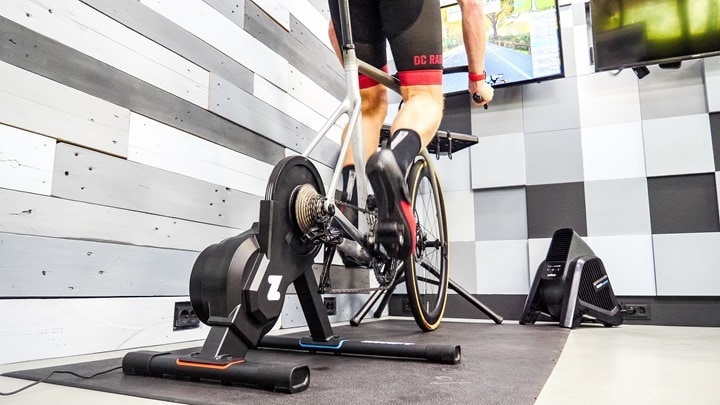
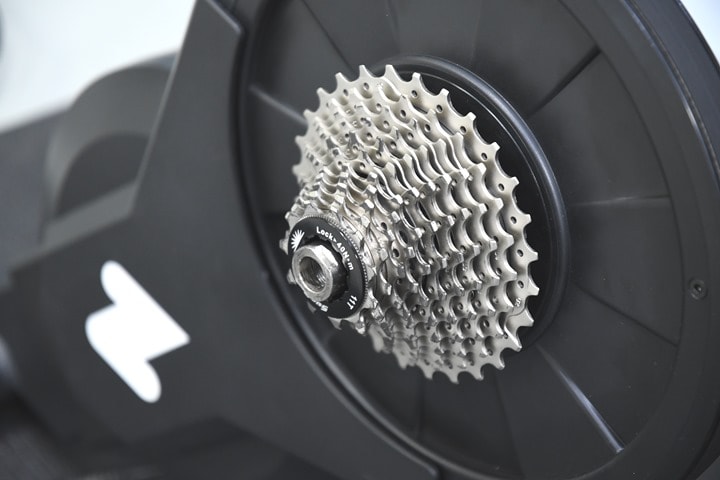
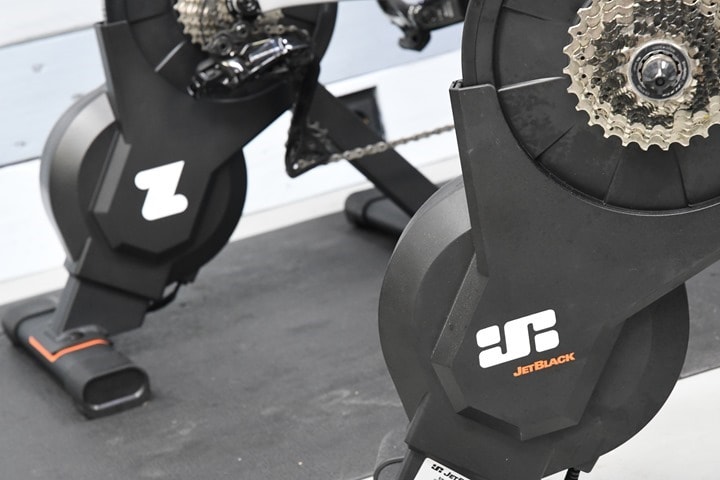
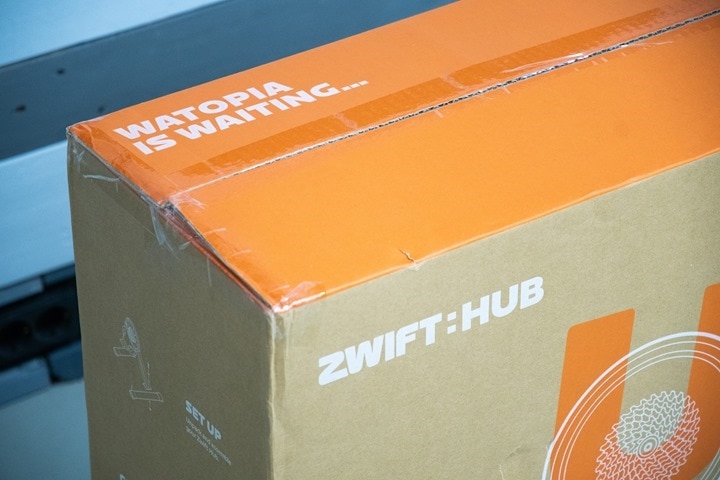
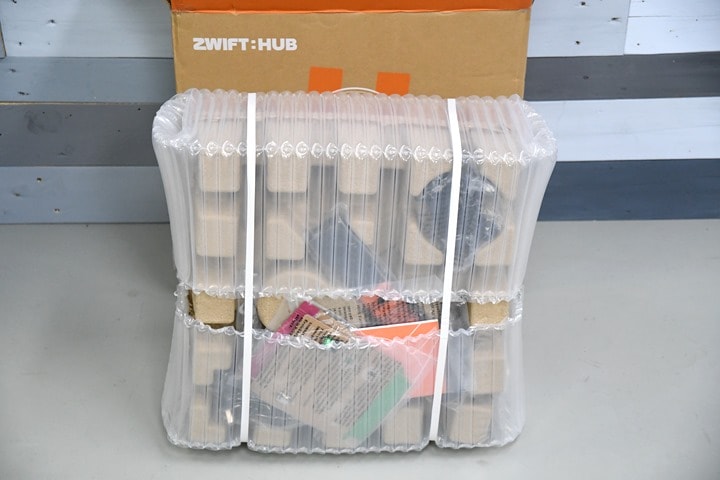
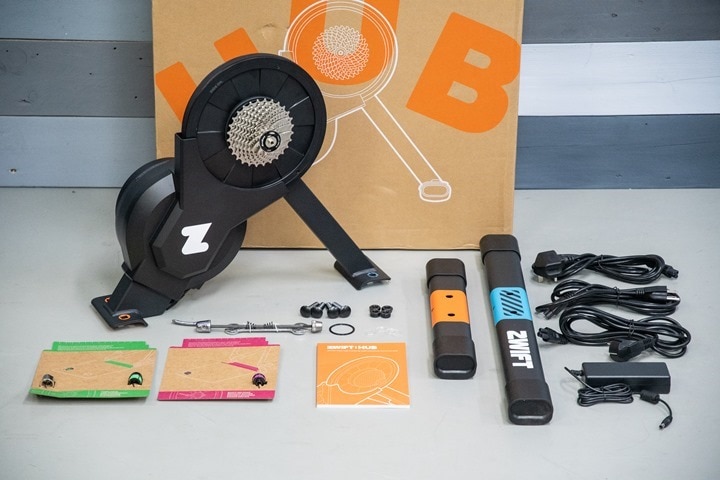
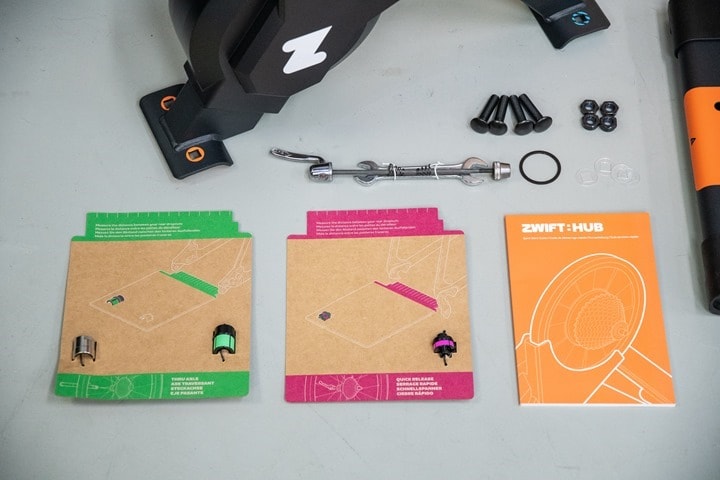
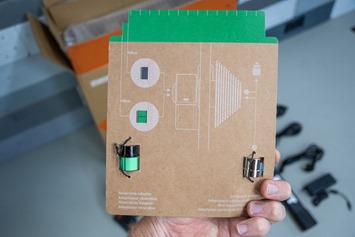
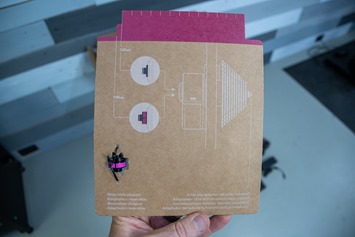
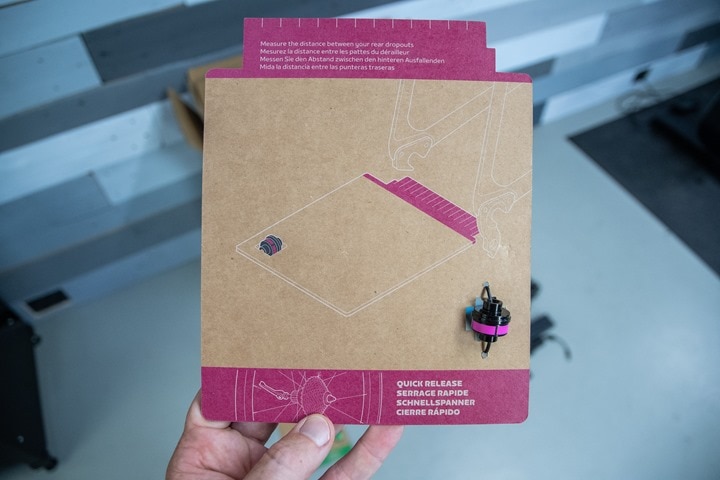
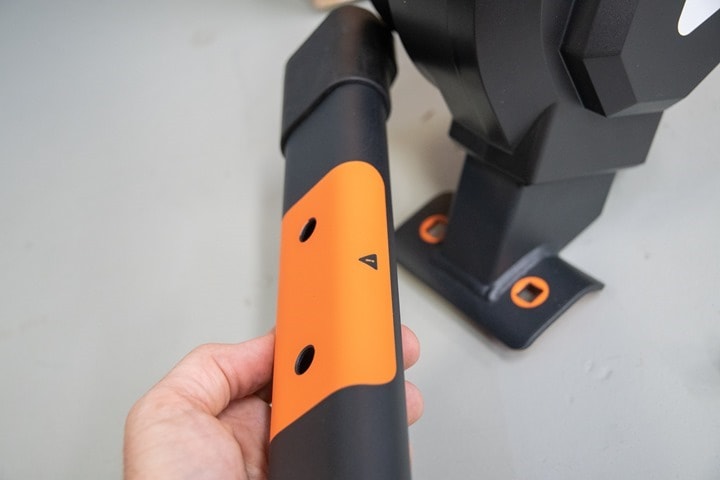
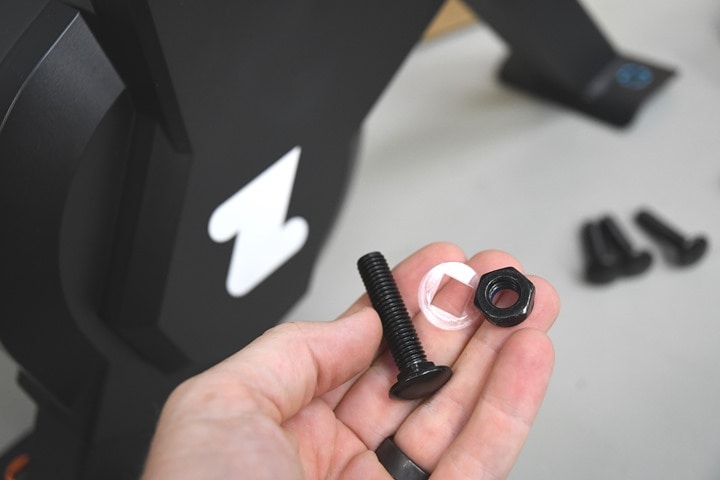
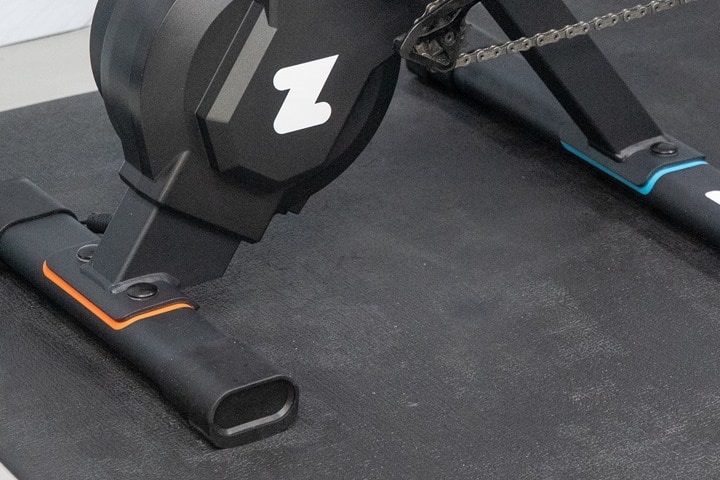
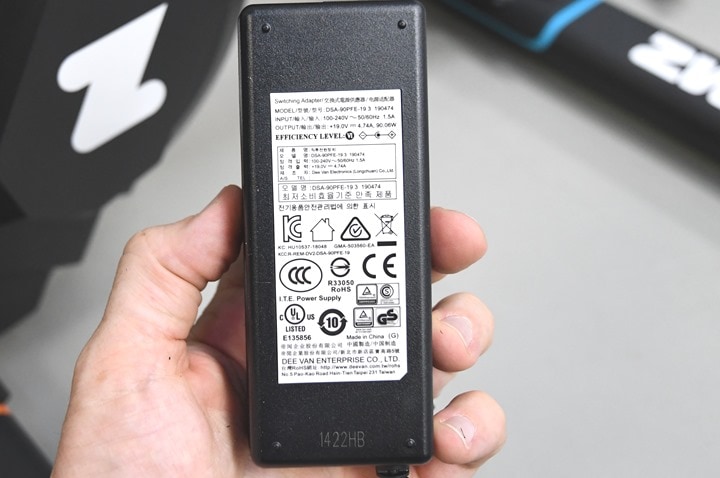
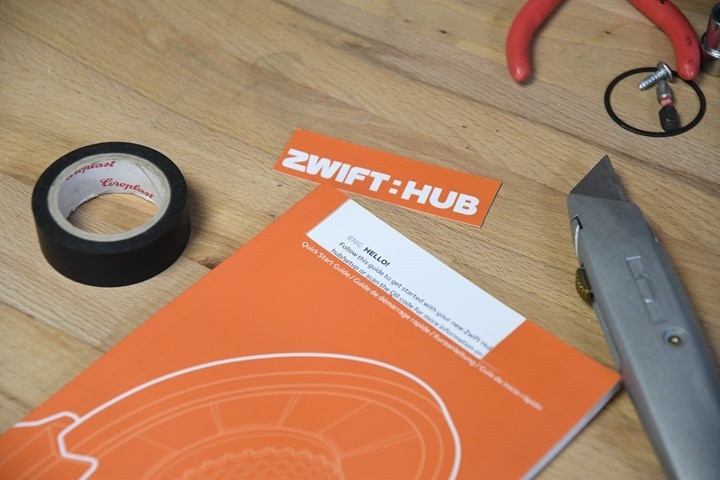
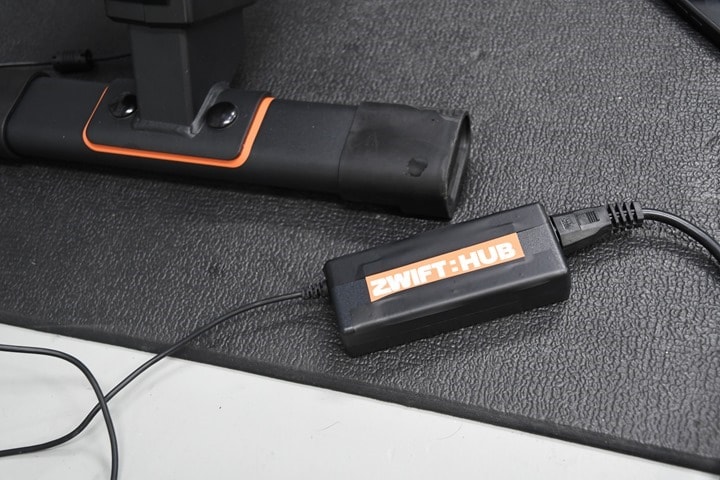
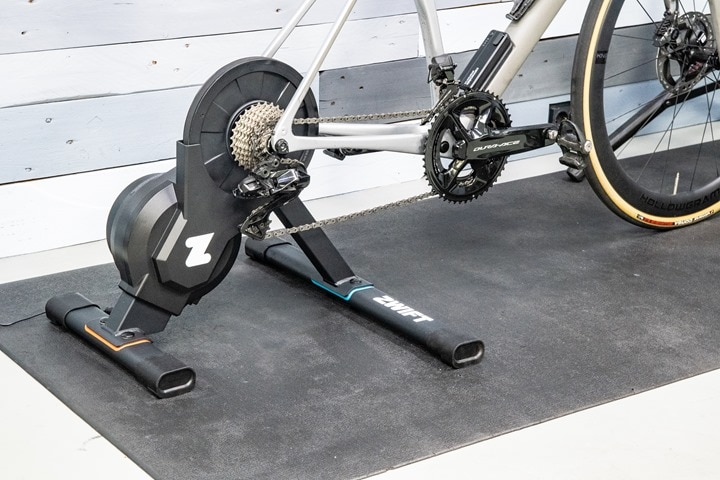
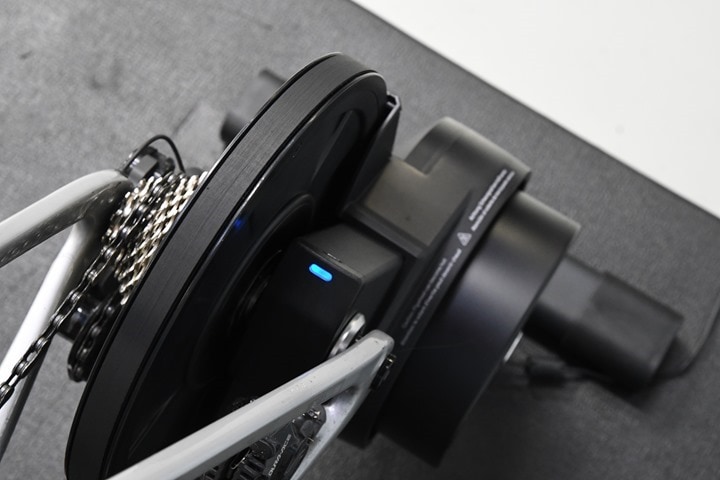
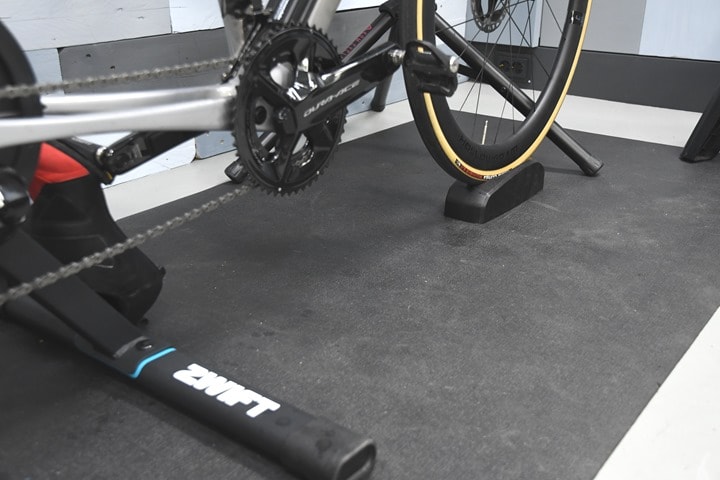
![clip_image001[12] clip_image001[12]](https://media.dcrainmaker.com/images/2022/10/clip_image00112_thumb.png)

![clip_image001[6] clip_image001[6]](https://media.dcrainmaker.com/images/2022/10/clip_image0016_thumb.png)
![clip_image001[8] clip_image001[8]](https://media.dcrainmaker.com/images/2022/10/clip_image0018_thumb.png)
![clip_image001[10] clip_image001[10]](https://media.dcrainmaker.com/images/2022/10/clip_image00110_thumb.png)
![clip_image001[14] clip_image001[14]](https://media.dcrainmaker.com/images/2022/10/clip_image00114_thumb.jpg)
![clip_image001[16] clip_image001[16]](https://media.dcrainmaker.com/images/2022/10/clip_image00116_thumb.jpg)
![clip_image001[18] clip_image001[18]](https://media.dcrainmaker.com/images/2022/10/clip_image00118_thumb.jpg)
![clip_image001[20] clip_image001[20]](https://media.dcrainmaker.com/images/2022/10/clip_image00120_thumb.jpg)


![clip_image001[8] clip_image001[8]](https://media.dcrainmaker.com/images/2022/10/clip_image0018_thumb.jpg)
![clip_image001[12] clip_image001[12]](https://media.dcrainmaker.com/images/2022/10/clip_image00112_thumb.jpg)
![clip_image001[10] clip_image001[10]](https://media.dcrainmaker.com/images/2022/10/clip_image00110_thumb.jpg)
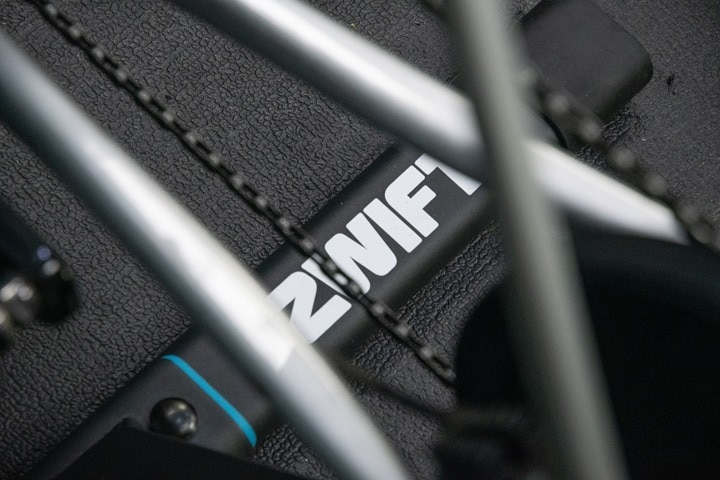
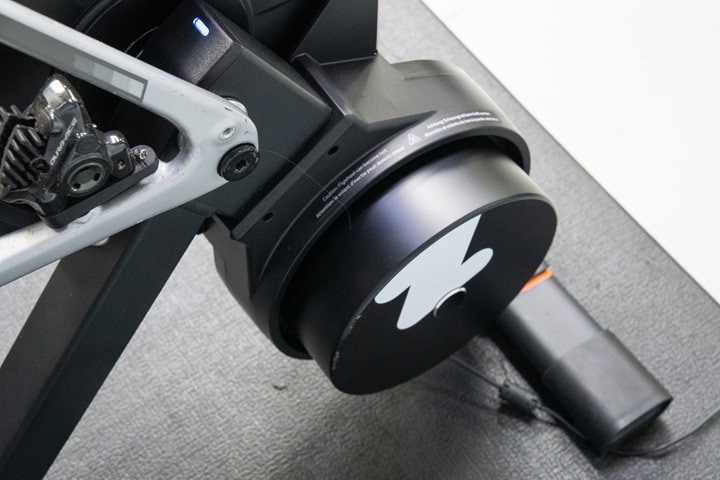
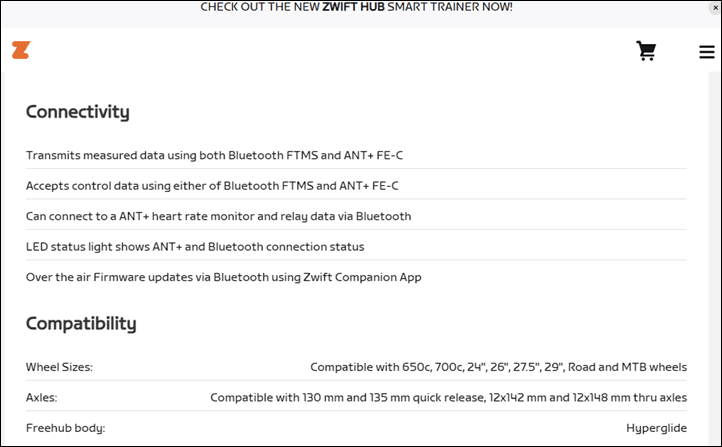
![clip_image001[22] clip_image001[22]](https://media.dcrainmaker.com/images/2022/10/clip_image00122_thumb.jpg)
![clip_image001[28] clip_image001[28]](https://media.dcrainmaker.com/images/2022/10/clip_image00128_thumb.jpg)
![clip_image001[26] clip_image001[26]](https://media.dcrainmaker.com/images/2022/10/clip_image00126_thumb.jpg)
![clip_image001[6] clip_image001[6]](https://media.dcrainmaker.com/images/2022/10/clip_image0016_thumb.jpg)

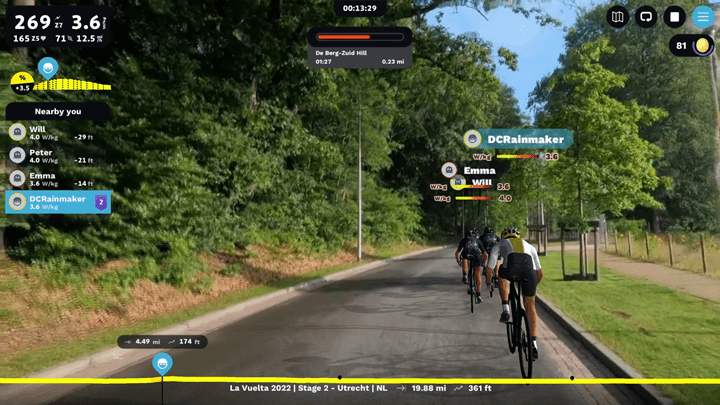
![clip_image001[24] clip_image001[24]](https://media.dcrainmaker.com/images/2022/10/clip_image00124_thumb.jpg)
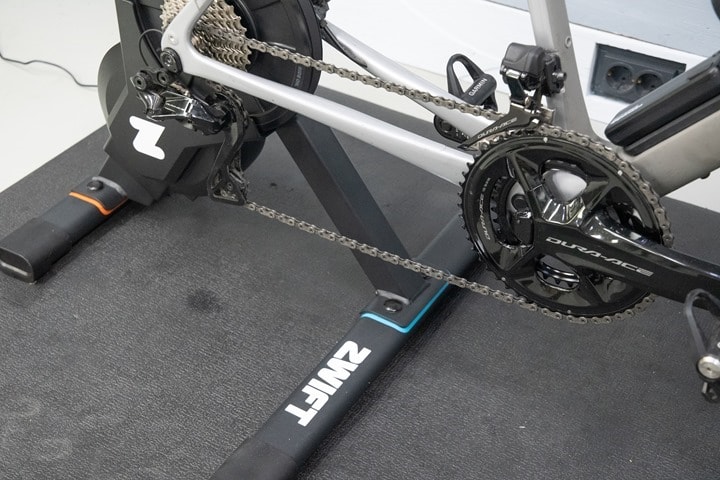















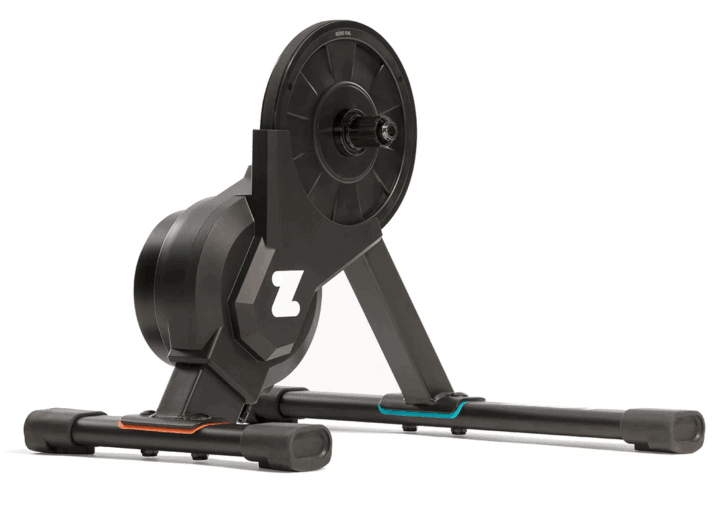
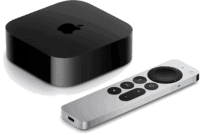



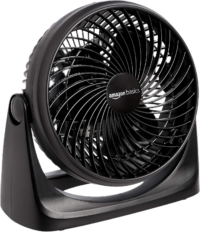

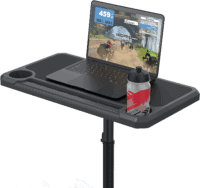
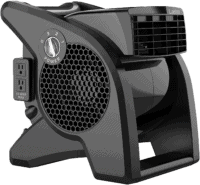
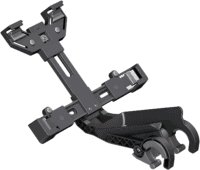




















Thank you for this post!
Curious, is the zwift hub quieter than my kickr core?
I like my kickr core, but it’s a bit noisy, even after having it looked at by my local shop, and I’m interested in the zwift hub, if it can truly be “whisper quiet”, as the ads say ;)
Thanks!
I’m impressed if you can clean and lube your bike’s drivetrain to be quieter than your Kickr Core. My GF has the Wahoo and it’s pretty silent. I can’t even hear my Saris H3 over my drivetrain noise (fine, I’ll clean and lube today). But really, the noise from my fan is much louder than both.
Hmm, agree with Morey – your CORE should be quiet and basically silent. Assuming that your drivetrain is cleanish and your cassette is properly aligned (meaning, not an incorrect spacer in place), it should legit be quite. And the VOLT should basically be the same.
Thank you both!
Zwift has just reduced the price of every available smart trainer no more than $499.
There’s (almost) no reason to spend more.
I wonder who is about to go out of business.
Unless you race Sanctioned events where higher accuracy is required.
Peloton for one even though not the same type of business model.
link to wsj.com
GPLama “shoes” or “shows”?
Thanks for the review. Interesting as always.
Doh, thanks! And thanks for being a DCR Supporter!
Thank you for writing these – I appreciate the attention given to a new rider POV.
only the 10 speed cassette is in stock
Zwift says another allotment is trainers is set to arrive next week.
EU or US? It’s sold out completely in EU…
I just bought a Saris H3 for 430 € (+ cassette), which unfortunately basically arrived broken (red light and now no connection possible after first 30 minutes of riding).
now I’m stuck with a broken trainer bought from a shop with virtually no customer support, trying to get back my money or a new device, which will probably take weeks..
should’ve just waited for the Zwift Hub instead :(
I got the red light once on my H3 after disconnecting during a stalled update, Simon. Try a reboot followed by a software update.
Any word on shipment dates? Order yesterday and looking forward to riding soon!
Ray – Do you know if the smart steering block signal is planned to also be linked to the Hub and re-broadcast? What I mean is will the trainer, heartrate, and steering all be broadcast on a single blue tooth channel? Or will the smart steering always be on a dedicated channel.
What is the impact of accuracy if you’re using Power Match in TrainerRoad? Is it less important for the trainer to be as accurate or would it oscillate more because it isn’t? Would that avoid the spin down after ten minutes issue?
When you run PowerMatch in TR (or similar function in other apps), the trainer is more passive in a way, and the actual power reporting partly doesn’t matter. The app uses your connected power meter as the “source of truth” and adjusts the trainer resistance to whatever level is needed to hit and hold the power target.
We’ve asked TR multiple times if it’s necessary to calibrate the trainer when using PowerMatch and they say it’s not necessary. While the power data sent from the trainer may shift around, that does not affect the ERG workout since TR will continue to fine tune the trainer resistance level each moment based only upon your power meter.
I would love to know the gears of the 12 speed cassette. Currently I have mounted a 12 speed MTB cassette on my Jetblack Volt but the biggest gear is a little too big and had to use some spacers so it doesn’t touch the trainer.
…and they’re all sold out. Guess they weren’t expecting this kind of demand.
Thanks as always Ray. Great review. I’ve pinged some of my mates looking for smart trainers as this is a perfect entry into the dark world of indoor cycling/racing.
I know people make a big deal about including a cassette. My Specialized Roubaix came with an 11 x 34 cassette. Popping my bike onto the Zwift Hub, I’m afraid the chain is going to try to fly off and that indexing for indoor riding will be a nightmare. Not a knock on Zwift, they are targeting indoor riders, not folks who may use their bike indoors as well as outdoors. People with dedicated indoor and outdoor bikes might not be the demographic for the Hub. For dual-use folks I should think matching what you have on your outdoor rear wheel and the trainer is a better way to go. YMMV.
This has always been my view too – as much as I understand the frustration of buying an expensive piece of kit only to find you still need to fork out more money to use it, personally I’m much happier to have that option left to me so I can match the range of the cassette to my bike or choose a different range better-suited to virtual riding, rather than be forced to pay for a ‘standard’ cassette that I might never use. I suppose you could argue the same for buying an off-the-shelf bike though.
If that is your concern you need to change your chain!
if you get a new chain, put the cassette from your bike on the trainer and use the new one on your wheel.
Not too sure I follow this Chris…. why would I want an 11 x 34 on the trainer and then put 11 x 28 on my wheel? Still have the same chain issue issue. Moot point for me anyway as I am invested in the Wahoo ecosystem with the Climb — well at least until that breaks then we’ll see.
Ray, the comparison grid shows “Not today” for temperature compensation which implies, to me at least, that this may be available in future as a firmware upgrade. But elsewhere in the review you write, “… as the Zwift Hub doesn’t have an internal temperature sensor.”
got mind the other day, and after a test to set up i did a moderate hour ride at average 180 W, ( with high cadence) in a cool 18degC room, at the end there was a slight burning smell ( new electrics?) but the rear non drive side ( resistance) box was too hot to touch . is this normal, heat energy has to go somewhere but id have thought the heat dissipation would have been better ?
I shall do a harder fide later ans see how it goes ( or burns !)
Steve
Real life pricing eg. for Elite are much, much lower. Suito is now approx 475€ and Direto 600€ at German shops (without casette), so 799€… is just a catalogue price.
Maybe it’s just my viewangle but I’d tend to believe that cases where the cassette on the trainer is so much different from the cassette they have on the bike is really a small percentage of the total market, they can’t make a value proposition taking in consideration such a small share.
In any case, a 50/34 with 11/34 combination isn’t so much different from a standard road gearing, it should be possible to recover the slightly longer chain by gearing up one or two steps on the rear cogs, right?
I mean: i usually use the 50 and gear so as to have straight chain line (is it 50-14 or 15?), if I had a chain cut to fit in a 11-34 cassette I’d probably solve hte problem by using the 50-17 or 19 at worst.
cheers
Luca
Is it possible to rotate the bicycle up against the wall vertically when not in use with this trainer? It’s a nice “hack” I currently use with Kickr Snap, which allows me to keep the bike on the trainer and yet re-claim living-room space after training.
If I had to guess then probably it does not allow such rotation. Only Wahoo does due to the compatibility with Kickr Climb. I hope I’m wrong about this.
According to the comment I saw from Shane Miller in his review, the Hub/Volt has a fixed / non-rotating axle.
Good to see a high-quality trainer becoming more affordable, but I wonder what it will mean in the long term for competition. I guess no other trainer manufacturer can rely on a platform as profitable as Zwift to recoup their loss on lower priced trainers, and may eventually be forced out of the market.
Now, what about a cheaper smart bike? We are a family of four of different sizes and the trainer is an room which is a pain to bring different bicyles too. Having an adjustable smart bike would be a lot easier, but I am not sure I want to pay 2500€ for that confort…
Sorry if I’m mixing things up here between auto-calibration and stabilization in the Hub when asking this quesiton: Is there any idea what triggers the auto-calibration function in the hub? e.g., is it a case of spinning for 10 minutes after X minutes of non-use (e.g., 600 minutes, 1200 minutes, etc)? Or is it an auto-calibration happening only one time after the machine is plugged in and gets 10 minutes of use?
Asking here because my garage sees serious temperature swings in the winter so I’m wondering how this auto-calibrate will kick in if there is no temperature sensor. it must based on “time since last use” or “time since power is identified,” or maybe “time since a BT or ANT+ connection”…
Thanks!
Neither Zwift nor JetBlack have released auto-calibration for the trainers at this time, so we really don’t know how it will work.
Hey Ray which data field it’s the one on the watch to have a gauge-like view of the power? Looks really nice! :D
So two questions:
1) if Elite Suito is available for essentially same price, which would you prefer? I see the Zwift has a heavier flywheel, otherwise they look pretty similar.
2) What are differences between buying Zwift Hub or the Jetblack Volt 2? Are the setup cards for spacing unique to Zwift and does it integrate easier into the app at all?
1) I’d probably go with this. I just get better road-feel on this than the Suito. A fair bit better.
2) Hardware, none. You wouldn’t get the cards in the Jetblack box, but I’m guessing since you’re here and a DCR Supporter, you’re probably familiar enough with bikes to know which skewer/axle size you have (or can simply measure it with a tape measure). The firmware update and HR sensor pairing happens in different apps, but no biggie there. There’s no other integration beyond that that’s different.
Hi and thanks for this review!
I’m not sure to understand: if I buy now a JetBlack Volt, will I get the same trainer or is it the Volt 2 (which is not released yet?) which will be the same? I can’t find any info on the net about this “v2”…
Thanks!
Hi Vassili, the only main difference between the v1 AND v2 is the frame shape to allow more Disc Mounted bikes. Saying this using a pedal spacer solves 95% of compatiblitly issues with disc mounts. A couple of other hardware upgrades internally but all firmware is updated to v2 Specs. Hope this helps. Cheers Murray
Thanks for the review. I awoke early yesterday and ordered this at 5am. It arrived today and I had my first ride in Zwift this afternoon. So far it’s excellent, as I’m currently recovering from an injury, Zwift is much kinder on my foot than running or mountain biking. The key appeal as a newbie is the accessible price and simple setup instructions. Hopefully others will follow this lead.
Thanks for the review Ray!
Would you buy this, or V1 of Volt for the same price if you needed a trainer for the fast-approaching winter?
To somewhat indirectly answer your question – JetBlack says they’re aiming to get the V2 available in not just the Zwift markets, but all markets, at the same $499 (or equiv) pricing. Thus, it’s basically a wash at that point.
Obviously, Zwift could do something on this specific trainer a year or two down the road that’s not somehow offered by JetBlack, but I think for a trainer at this level that’s unlikely to happen (whereas if we were talking a $1,500 NEO-level trainer, we might see something like that).
Zwift says we haven’t found a bike that doesn’t fit.
Me: Just give me a second!
I sold my Kickr Core for this purpose. F…!
Bummer. Sad that trainer makers are still messing this up. Seems they are ignoring what is potentially known by wheel makers, with respect to frame clearance at the hub mounting surface.
Mostly off topic, but I am scratching my head as to why anyone would ditch a Core in hand to get this trainer. Seems like a downgrade in every angle I can pictuer.
I can understand you, the core was not approved for my bike. I saw a new chance in the hub :(
Oh, man… that is really a kick in the nuts then, so sorry for that bad luck.
Here’s to hoping that Zwift can get a proper solution for you after all that.
Canada would like to have a chat about this “Global” availability.
Good catch.
If you have to choose beetween Zwift Hub and Elite Direto X, what will be better option to buy?
Exactly same doubt here: Elite Direto X (460 € – no cassette) or Jetblack Volt/Zwift Hub (500€ – including cassette)?
How often does it require calibration? Unless I’ve missed this part in DCR’s review…
Per the article:
“…if you leave your trainer in a temperature-stable place (so…not the garage), then by and large the calibration curve remains the same. Meaning, you can pretty much get away with doing a calibration every once in a while (few weeks), because the trainer will heat-up the same way each time over those 10 minutes. The difference in my testing is about 10w (on 250w).”
If you are are not in a temp stable area, it sounds like it’s best to do a calibration each time you ride, after the 10 minute warm up period.
All that might change if/when they finally get the firmware update that is supposed to include “Autocalibration”.
According to the trainer specs on the Zwift Hub page….
Preinstalled cassette gear ratios
12 speed option: 11-30 tooth
8, 9, 10 & 11 speed options: 11-28 tooth
Ray,
1. Great Review
2. Can the zwift companion app allow users to operate the trainer in ERG mode by selecting a desired wattage, or in simulation mode, by selecting a certain grade or difficulty level? Similar to how I believe the wahoo app lets you set those and just ride without needing TrainerRoad or Zwift or any other app?
Under the product comparision, one of the line items is “CAN ROCK SIDE TO SIDE (SIGNIFICANTLY)”
What is the definition of “significant”? I am currently using a dumb trainer on a rocker plate. Is there measureable tolerance these can operate under?
No firm answer I see listed, but some can be inferred from checking against other trainers in Ray’s Product Comparison Tool:
– Kinetic SC2018 R&R = ROCK & ROLL VARIANT (This is arguably the trainer that set the “Rock” standard. It still remains the most motion offered in a bike trainer without stepping into the world of Rocker Plates.)
– Kinetic R1 = YES (but also lists “ENTIRE TRAINER ROCKS/ROLLS SIDE TO SIDE” in the Road Simulation box, which seems like a mistake and belongs in the “ROCK” one above)
– Elite Justo = VERY SLIGHTLY
– The latest Kickr’s = BARELY…JUST BARELY
– Even the Tacx Neo’s with their claimed “flex” = NO
– Most other trainers are simply listed as “NO”.
So we can kind of reverse engineer what ratings might be with the current crop of trainers.
be careful of the kinetic rick and roll ( fluid and control) if your on the heavier side, i got through three, the welds on the arms broke on all three, first two were replaced no problem ( lifetime guarantee) they got very iffy about the third, wanted me to pay for carriage from states to uk at an extortionate cost.
Bought a road machine frame for less, and moved the control/ wheel on over.
Love the feel of the rock and roll, but happy with the road machine, ( but niw getting erratic power readings, ERG response seems to have deteriorated, or wheel is slipping more ?) replacing with wheel-off zwift hub.
I like the fact that Zwift have gone with open standards. However, I’m left questioning Firmware updates …
1 – it’s noted these are done via the Zwift Companion App, so does this require me to be a Zwift paying subscriber to login to the Companion App to install future Firmware updates?
2 – As the trainer is basically a Jetblack Volt, could I use one of their Apps to upgrade Firmware should the answer to ‘1’ being that I do need to Zwift subscriber?
Thanks.
1. No, you do not need to have an active, paid subscription to Zwift for Hub use and FW updates in the Companion app. You DO NEED a Zwift account to access through the companion app, but the free access you get just by creating a Z account is all you need.
I have been helping a VI rider with getting set up for training indoors, as well as piloting him outdoors for races etc. Personally, I still use dumb trainers (jet fluid, tacx rollers and a cyclosimulator) so we are well outside my actual experience when talking about smart trainers and zwift and other platforms.
Once set up, to what degree can the zwift hub, and zwift, be used for daily use through a voice recogniton app? (E.g. Google assistant or ios siri)
So Wahoo have lodged multiple patent violations against Zwift – and via that JetBlack – for patent violations asserting that the unit is copying the Kickr Core.
Smells a bit fishy tbh. They’ve had plenty of time to make these claims against the Volt. What it will do thoough is block sales in the US during the busiest time of the year for trainer purchases.
Bad Wahoo, naughty Wahoo… again.
For the last 5 years or so I’ve been using the dumb Stac Zero turbo for Zwift –
Will this be as quiet as the Stac Zero ?
Is the “ride” better ? Sometimes I feel the Stac is a bit of a trudge.
Do people like Zwift changing the resistance for workouts ? I’m used to very few gear changes each ride.
Cheers
Agreed. Gear changes are something from riding outside that I can do without, just like stop signs and cars.
Guys new elite direto xr, zwift hub or refurbished wahoo kickr core?
I have received an E-mail from Zwift yesterday evening (October 20th) that the Hub was available again.
And when I use the lin provided in that E-mail, it really is available, with the exception of 12-speed version.
But when I go to Zwift web page directly, it only shows I can join the waiting list.
So, if you would like to buy the hub, maybe it is a good idea to join the waiting list and receive such E-mails.
Or you can try this link which came in my E-mail:
link to eu.zwift.com
It is EU link, so I don´t know if it is available in the US market.
Thanks for the great article.
Can you advise a newbee who wants to start riding and has no experience. I just love riding and want to take this up but I don;t know how to start. I don;t want to overbuy yet I also want to buy the right setup not having to do myself short. Also my kid wants to join in so I need to make a wise purchase.
At this moment I’m looking at the Kickr Core and de Swift option. Not to far apart but there are always extra costs involved.
Could you advise in what to buy?
Thanks and regards,
Peter
Are you basically telling me to buy a zwift hub over anything else at the price range of upto $800?
I wonder how support works for the Zwift Hub if it is only being sold online.
When something goes wrong, who would repair it?
Under warranty I have to ship it over somewhere, but I have not found any indication where that might be and how much the shipping would cost.
And what happens after the warranty has expired?
For example, I have a Reebok eliptical trainer that is being even sold in local shops in my country, but there is no service center for it, so I need to call a technician from another country to repair it.
It’s the same as many other products that are online only. You simply contact Zwift support, and then if need be they sort out the return (usually providing a label), and replacement of the unit.
Obviously, if you buy the unit in the EU (for example) via them, but then travel to somewhere they don’t sell hardware in (like Brazil), then you’d be up a creek (just like with Wahoo or anyone else).
I have yet to purchase my first online-only product, so I am worried. :-)
I would like to see answers to these questions published somewhere by Zwift.
1. Will Zwift pay for shipping within the warranty period?
2. And, after the warranty is gone, will Zwift still provide repairs for the product, and if yes, where will the repair center (for Europe or specific countries) be located?
I could not find any such statement on their webpage.
So I have E-mailed Swift about this and got an answer, very quickly by the way, so their support seems to be very responsive.
In-Warranty they will either send me spare parts or replace a faulty unit at no cost.
After-Warranty “There is a good chance we can still help you with troubleshooting it. We have put a lot of planning into its longevity and long-term customer experience”
So I read this as they will not repair it, and no one else will.
Unfortunately, this is a no go for me.
I am not ready to buy a new trainer after two years.
Also, they do not sell XDR free hub for the trainer, and recommend buying one from Jet Black, but Jet Black does not sell in Europe as far as I know.
It is a shame, I would love to buy this trainer. :-(
As of May 2023, Zwift started selling XDR freehub for the Zwift hub.
Hi!
Newbee to indoor riding – I wonder if I should go for a Kickr Core sold for 600€ (plus the cassette) from a local retailer or go for a Zwifthub. Is it worth the 150€ difference?
I’d say it’s mainly worth it if:
A) You plan to buy a Wahoo KICKR CLIMB
B) You want multi-channel Bluetooth connections
C) You want to support a specific local retailer
Cheers!
Thanks Ray! Will consider C) the most… (And A) of course, uhm, in a while…)
I have been using a Kurt Kinetic road machine “smart” with the control unit. How much of a difference and improvement would I find if I switched to a direct drive like the Zwift Hub?
ive just purchased a hub, to replace my Kinetic road machine control
I used garmin V3 pedals so power measurement is constant across my bikes.
I always found the Kinetic calibration out, and had to tighten my back wheel ( with training tyre) as tight as it would go, with V3 pedals no calibration needed.
have to use another bike as my retro steel bike i normally use is only 6 speed, need to see if it will stretch 5mm and get a 7 speed cassette ( its currently a freewheel)
Whole set up is shorter. ( no back wheel), no raiser block is needed for front wheel which is on ground hence also don’t need mounting block to get leg over !
Using ATV so able to pair hub, hrm, and V3 pedals without zwift companion app
(Hub is selectable on zwift as control with V3 pedals as power/cadence source without the select kinetic to all first then change workaround)
only ridden hub twice, test, one free-ride test, which showed hub and V3 pedals gave similar power readings ( after calibration of *both* and changing crank length for V3 !)
on a workout ERG ride, the power readings fluctuate a lot less for “constant” cadence, with a much quicker response and obviously no wheel slip at low cadence and sudden acceleration…
The power display at bottom of screen is of a more uniform colour for segments at bottom of screen.
only concern so far us how hot hub gets…
Need to ride more to find other differences…
I received the trainer two days ago and there were no cables in the box. So I can’t even try it. I chatted and sent an email to Zwift and I’m still waiting on an answer. Someone suggested I might have gotten a returned item with missing components…
I think Zwift nailed the pricing on the Hub, but I got tired of playing wait and see on availability. Wahoo announced a sale, so I went to their website and ordered a Wahoo Kickr Core refurb for the same price as a Hub ($499 USD + tax with free shipping and full warranty). I’ve got a spare cassette.
I think the Core will be a nice upgrade from my Kickr Snap wheel-on trainer. The Core has known accuracy and support, and the price dropped below the point I was looking for. I also considered the Saris H3 that people have snagged for a great price (at or below $400 USD). I had the H3 in my cart for a couple days while I went down the review rabbit hole, and then the discount code stopped working.
Thank you for this post!
In Colombia i can find them for the same price the elite studio than imports the Zwift hub, which one do you recommend?
Hello DCR
What would I actually need to Zwift with this? Do I need a tablet or a PC or can I play it directly on my TV or with an Android TV box? Do I need an ANT+ or Bluetooth dongle for any of these?
I also have a Garmin watch that could broadcast my heart rate over Bluetooth or ANT+ as well, can it also broadcast it to wherever Zwift is running?
I’m a bit confused as to what I’d need to see both my heart-rate from my watch + wattage from the Zwift Hub on as big a screen as possible :)
Cheers
a fish
Heads-up — I recently received the Zwift Hub 12-speed version. However, I’ve not been able to use it yet.
It appears that the drive-side 142mm thru-axle adapter that came with the trainer is too short — by appx 3-4mm. This results in contact and binding between the cassette lock ring and the dropout on my bike when both the adapter is fully fastened in the trainer (per Zwift’s instructed Nm’s), and my thru-axle is tightened (to an identical level for my rear wheel).
I’ve been in contact with Zwift customer support about it and I’m awaiting a solution. Just sharing here to see if anyone else has experienced this issue as well.
Just taken delivery of the Hub, 10 speed cassette was rubbish, “wonky” replaced straight away with my own, let’s see how customer support deal with it!
With this slightly more expensive now than the Saris H3 on black friday sale (without a cassette) which one would you reccomend?
Many thanks
Hi Stuart, I know you’re not looking for a reply from me! All I’d say is that the Zwift Hub was great for me I’d also considered the Saris, however as a company their financials are not great and with a two tear warranty for Zwift I expect them to be around to honour it.
I’m aware of copyright issues for Zwift but think they’ll pull through!!
That’s tough. If I was fully doing mostly Zwift unstructured workouts (non-ERG mode), I’d probably go Zwift Hub. Whereas, if I was doing purely structured workouts (e.g. TrainerRoad or Zwift ERG mode), then I’d probably go H3.
Hi, can I ask for recommendations for a Bluetooth sensor to go with the Hub and a Windows 10pc please? Using Ant + but not getting the calibration, don’t want to run it through the ZC app atm either
Thank!
I assume there are no issues buying the zwift hub in the US and taking it over to Europe?
Correct. It’s 100-240v, and comes with all three cables in the box. Alternatively, you can just buy a $1 power adapter if you need it.
Does the Zwift Hub have the same road feel, i.e. can you “feel” the cobbles and wooden bridges as you pedal along as I can on my Tacx Neo2T?
Nope, the Hub does not offer “Road Feel”.
Thanks Chad! And indeed, the only trainer type/model that offers road feel from any company, is the Tacx NEO series (either trainer or bike).
Zwift are having major QC issues in the UK, as I discovered myself. First one I received there was clearly something very wrong with the resistance unit, impossible to turn at times, random power readings with some very unusually clanging sounds… and the cassette was really badly fitted. Sent a video to Zwift who quickly replaced it. Second one had a minor rattling noise inside when I first used it. A piece of plastic fell out from behind the drum, when I was checking it, other than that it was much better resistance wide but was instantly making a rhythmic scraping noise. A quick check and I noticed the flywheel was warped and catching on the housing. A few quick adjustments as advised by zwift didn’t make any difference. Im currently waiting for my 3rd hub – not very confident given my experience to date, some of the installation just looked really sloppy – tons of blue grease on the first one and some odd looking fit on closer inspection. Zwift support have been superb and very apologetic one mentioned teething problems and the second time they collected the unit rather than have me lug it to a parcel shop. Ive seen some comments mentioning high quality, so far (having had a number of Tacx Units in the past) its nowhere near but as a product I really want it to work for me as it ticks all the boxes. If this one is a problem ill probably be back looking at an equivalent Tacx or Wahoo model
Hi Ray,
Thanks for your great work!
I’m considering buying the Zwift Hub, but I have the following options. For the same price, I can get the Hub (new), Kickr Core (refurbished by wahoo), or H3 (new). I think that being silent is a priority for me, so I have doubts with the H3 even if its specs and erg mode are better. What is your call on what may be better to buy for the same price? Maybe the H3 doesn’t make that much noise after all, or not more than a fan or drivetrain would make?
Thank you and happy Christmas!
Just curious, where can you currently get a core or H3 for a similar price? My wahoo died yesterday, so I need to order a new trainer asap. Thanks!
In the UK you can get it from Tredz. Some other sites have it for under 500 pounds. I don’t know if you can find it for that price elsewhere!
If the prices are all the same, I’d probably go KICKR CORE, because:
A) CLIMB compatibility if you want it down the road
B) Actually silent
C) Multi-channel Bluetooth config
I wouldn’t really worry about refurb or not, I recently bought a KICKR Bike refurb. There was a very tiny barely visible 1cm scratch on one leg, and that was it. A scratch I’d probably have made myself the first day with my cleats, mounting the bike. In general, my standpoint on refurb stuff is give things a good once over when it arrives, document it well (including any unexpected noise), and if all is well, it’ll probably be well.
Cheers!
Thank you very much!
Bonjour j’hésite très sérieusement entre un zwift hub et un Tacx flux 2 smart. Je fais principalement des entraînements sur swift (notamment Build me up) et des entraînements fractionnés. Lequel me conseillez vous? Actuellement il y a un écart de 150/175 euros entre un TACX flux 2 et le zwift Hub (le Tacx étant plus chère bien sur).
Autre question, la puissance de 1800 W est-elle largement suffisante? Car cela semble bien inférieure aux capacités du Tacx flux 2 qui donne 2000W à 40KPH.
Je vous remercie par avance pour votre réponse et merci beaucoup pour vos publications qui sont extrêmement intéressante (je ne trouve pas d’égal en France). Bonne journée à tous.
1800w pas assez !!! Wow. Relis la section ou dcrainmaker expliques 1800w très peux ne peux l’atteindre
Unless you’re an up and coming pro, or existing pro, then there’s virtually no chance you’ll hit anywhere near 1,800 watts (perhaps half of that).
Is it possible to use the Zwift hub without any kind of subscription? For instance, is it possible to connect it with a free app where it is still possible to change the simulated grade? If so, can you name such app? Many thanks!
No app subscription is required. There are free apps, like the base version of RGT, which are…well…free. Though, do require a free subscription (meaning, you have to create an account).
And then there are apps like Golden Cheetah (open source), which are free and don’t require a subscription.
Thanks a lot for your reply. Will go for the Zwift Hub then ;)
Thanks as always for the great review.
Re: ” heart rate bridging/pairing. This allows you to pair your chest strap with the Zwift Hub, and then get pass-through heart rate, so that the trainer handles the HR connection to the app on behalf of your strap. The main/singular reason you’d want to do this is for Apple TV usage of Zwift or other apps.”
I have several ANT+ heart rate straps that don’t do Bluetooth. Seems like the main reason for the heart rate bridging is to allow use of these kind of ANT+ only straps without having to buy a new strap or an ANT+ dongle for a PC. Just Zwift trying to lower the barrier to entry for somebody with a bunch of old gear lying around.
Hey DC great review as always! Are you planning to do more long term review of the hub?
I’ll likely update the review if/when any notable firmware changes happen. Otherwise, things haven’t changed any (and we know the JetBlack unit that it’s rebranded/tweaked from has aged well).
Great review! Thanks!
Two questions:
1. Can I connect to my Campy Chorus 10 speed?
2. Does it have “lean” in the rear axle? I.e. a realism feature to simulate a normal rocking bike on the road. I think I read the Kikr has 5%.
Thanks.
Jim
1. No, the Hub has no official Campy 10-s freehub support.
2. No, the Hub is totally rigid. Any desired motion must be added through the various methods seen in DIY or purchased products.
Does this freehub fit on the Zwift trainer axle?
link to wahoofitness.com
Or, for that matter, can I get a regular Campy 10 speed freehub and mount it on the Zwift?
Great comparison. A comment if I may
What can be easier to view (sometime) when you have a plots like you have is to define a reference and plot the ratio: test product/ reference thus one can clearly see the “error”
I have just received my new Zwift Hub and using the Thru Axle measuring card I have fount out that my bike has 135mm Thru Axles. I am trying to find a solution and wondered if Zwift or JetBlack or someone else offer an after market insert/converter for 135mm thru axles?
Can you list the exact Make, Model & Year of your bike?
Can you list the exact Make, Model & Year of your bike?
Bike is a 2016 Specialized Diverge Comp Carbon link to specializedconceptstore.co.uk
OK, this is one of those instances where a brand takes a gamble on a “new standard” and comes up a loser. They offered the SCS axle and wheel setup for maybe 2 model years IIRC, and dumped it since there was no benefit and only problems on a wider scale.
link to builtbyjerry.com
I have not dug into it for a while, and am not sure if there is an “easy” fix since no wheel-off trainer that I have ever seen specifically listed it in the compatibility. The stock 142mm x 12mm cap setup will be too wide, and essentially, you need a non-drive side cap that is 7mm shorter (I think, but don’t take that for gospel as I’m still digging).
There seem to have been some discussions about this with other solutions like a different dropout insert. Most was centered around wheel use, but should crossover to trainers.
Hi Chad,
Think I have three options…
1. Machine 7mm from the outside of the non driveside insert (would get a local workshop to do this for me). This would void my guarentee.
2. Hope someone else has had this problem and can point me to where I could by an insert.
3. Find a way of using the quick release skewer on a thru axle bike… (no idea if this is possible).
Any help greatly appricated!
Ross
Ross,
Google and search the internet for an adapter. As I recall, a small company made an adapter specifically for the SCS hub for trainers. I have a 2016 Diverge Elite and thought about the same thing. Luckily, however, I have multiple bikes and it’s just easier to not use the Specialized on the trainer. But, I bet you can find a solution. Like me, sooner or later you are going to run into more issues with Specialized SCS hubs and simply have to ditch the bike. I’m keeping my eye out now and hoping I can afford to dump the bike soon as there are few options for wheel upgrades, etc. I have two sets of wheels which could keep me going a long time but eventually there will be problems.
Here is one solution or you could call the Robert Axle Project and discuss.
https://robertaxleproject.com/product/12×135142-1-0-mm-resistance-trainer/
Here’s another solution posted on a forum. Maybe only good on a Wahoo Kicker though.
“I wound up buying the Wahoo thru axle conversion kit. I only needed a few pieces — the longer axle, cassette spacer, and thru axle end cap. On the non-drive side, I had to bodge it together a bit to keep things from wobbling. Found that I had a few flanged washers that fit the Wahoo QR axle and the axle shell perfectly. A couple of those, paired with a cone shaped spacer from the Wahoo kit locked things in perfectly.”
Hi Ross, just to clarify you do have another option. Technically Chad is on the money here – the ‘SCS’ setup is technically a 137.5mm width hub (or was it 136.5mm), either way, non-standard. There is a ‘non-SCS’ dropout available for these frames. I can get you the Spesh model number if needed (should be easy to find online). That will convert your frame to 135mm dropouts.
But another option for you – but has to be your decision on viability/risk.
I also have a 2016 Diverge Comp Carbon (the Green Meanie!). Back in 2018/19 I grew tired of the rubbish SCS wheels (2nd set of Axis 4.0 died out of warranty) and played around with new wheels. I used combinations of 142 & 135 endcaps and the non-SCS dropout. In the end I ‘gave up’ trying to get Disc alignment good (without machining a couple of mm off an endcap) and just jammed in a 142 endcapped wheel with the SCS dropout still in the frame. It’s tight but fitted (‘stretches’ the frame rear triangle less than 2mm, but retains disc rotor spacing). You could try investigating the ‘mixed endcap route’ to avoid stretching (if I recall I used a 135mm one side and a 142mm the other) as rotor alignment wouldn’t be needed. Can’t help you with how to do this with the Zwift Hub.
I have continued to ‘stretch’ my frame 142mm since with 2 different wheelsets (Zipp 30 Course & 303S) with no adverse effects. I’ve covered nearly 20,000 outdoor miles since. 2 years of that (1500-2000 miles) even towing a kids trailer (up to 40kg) on the axle (not recommended and voids frame warranty). Zero issues. I even rode it on a Neo for a couple of months last winter.
Diverge still going strong – 1 Bike to Rule Them All. Commuter & Club Rider.
Sorry okrunner that won’t work. That’s made for ‘on wheel’ trainers which clamp by force using a QR clamping the frame around the trainer onto the interface. The interface on this trainer to the frame Ross is talking about (thru axle disc) is done by caps which screw into the frame, then the TA/QR bit screws and clamps through those, so it’s ‘through’ the frame, not ‘around’ it.
Another thought, as the SCS width is bigger than 135mm, using some washer/spacer (approx 2mm) between the NDS side and the trainer with 135 fittings on the trainer would space it near to fitting the SCS frame (use NDS so you don’t push the gear indexing out with moving the DS).
You say your Wahoo died. Out of interest – was it kickr? If so how long has it lasted? Thanks
I just upgraded to a Zwift Hub from a 2018 Wahoo KICKR Snap, mostly based on this review (it’s all your fault, Ray!). I have a single but big issue: Two rides in and the Zwift Hub registers 30-40% lower wattage than do my Garmin Rally pedals. I recorded a normal 1 hour session through Zwift/Zwift Hub (average power 192w), as well as an independent Indoor Bike session through my Garmin Forerunner paired to my Garmin Rally pedals (average 259w). Even through multiple calibrations and a firmware update, this gap persists. I do work out of a cold-ish garage (around 50ºF), but over the course of the session, the numbers did not converge. The numbers between my Garmin Rallys and the Wahoo KICKR Snap are very similar, within a few percentage points, so it’s not my Rallys. Any idea what might be causing such a big gap?
That Zwift hub power supply adapter provides 90W which is fairly common, just an FYI.
Thank you for the article!
I’m researching smart trainer options, although I’m a ride outdoors kind of person, even when temps hover around the freezing mark.
is the supplied 12speed cassette also compatible with 12sp Eagle MTB chains from SRAM?
Ever get an answer? I would also like to know.
What’s the gearing of the cassettes that come with the Hub please ?
11-28 on the 11 speed cassette
Thanks! I’m curious about power accuracy. I’ve watched GPLama’s review and it seems over time it can drift quite significantly. I often do long rides on zwift so that is something that matters to me, but it doesn’t seem like competing trainers in that price range do better though, like the Elite Suito.
These days you can find a kickr core or a direto xr-t at a nice discounted price. Would you get that instead of the zwift hub ?
Two weeks into using the zwift hub and it’s very good. Setup was very easy and it had performed seamlessly in all respects except one. It is hard to use with rgt. The Hub shows on the rgt screen and connects by bluetooth but no data goes to the app and the avatar doesn’t move. Internet connection is very good so that’s not the problem. Tried to different computers and many restarts of hub, app and computer but no go. I resurrected an ant + dongle from the tech junk pile and it connected after a while but there is a noticeable lag in the power, cadence etc. on the screen. So seamless except in rgt
I purchased a Smart Hub. The cassette was installed with an extra space and it resulted in the casette being noticeable crooked. I fixed that. Then it would not extra correctly. At that time, I gave up trying to get the device to power-up (tested wall recepticle and power lead with multimeter–getting power). I sent it back for a refund. I hate being the Quality Control and beta tester for companies
So, you say at the top that they aren’t selling this at a loss, yet recently in the the price hike interview on Bloomberg, Min said they’re having supply chain issues, that goods have gotten more expensive. So, in reality, they probably would be selling this at a loss if the hardware wasn’t being subsidized by software subscriptions… Because what other supply chain issues could a software company really have?
I have a feeling aspects of that video section might have been edited (shortened), and I’m also willing to give him the benefit of the doubt when trying to do an interview while on a smart trainer sweating, thoughts aren’t always crystal clear.
But in terms of inflationary costs, that’d be hosting fees, employee costs, office space costs, and every other cost they pay that has increased costs over the last 1+ years.
As for not selling at a loss, we know from JetBlack’s pricing of this same OEM model to other companies that it’s sub-$500 (for years), so it’s no surprise they aren’t selling it at a loss. There’s frankly no reason to think Zwift is taking a loss on it.
I bought the trainer but it was not compatible with my Cervelo Caledonia 5. Sent back & they gave quick refund, but I wasted a lot of time.
Having a problem with my Hub. When the flywheel is spinning at a high rpm (like on a fast descent) I stop pedalling but the trainer still reads power. Over about 10 seconds it slowly drops and then hovers around 20w before finally hitting 0 watts. Its like the flywheel has to hit a certain rpm before zeroing. Normally it wouldn’t bother me but it means I cannot supertuck until its too late, which can be annoying in a zwift race and you need a breather!
Dunno if its a common quirk with these trainers or that there’s something wrong with mine.
Hello Ray,
I am sure this is a stupid question, but I do not understand the following.
As the Zwift Hub does not send speed data over ANT+ or Bluetooth, how does the Zwift (or any other) software know how fast to move your avatar?
Does it calculate speed indirectly from power and gradient data?
Also, what does the improved speed reporting mean in the firmware update release notes, if the trainer does not send speed data?
Thank you very much for clarification
“Does it [Zwift] calculate speed indirectly from power and gradient data?”
– Essentially this:
link to zwiftinsider.com
Thank you very much!
Have you noticed any speed issues with Zwift hub?
I attach image, not sure does it show.
Anyway, I have noticed this now many times. Speed is increasing through the ride, though the power and cadence stays the same.
I start riding with set power (Zwift hub + Wahoo Bolt bike meter)..Like here with 140W (set from Wahoo Bolt). Speed is 25-26km/h, cadence around 80-82.
After 15km, I pedal standing about 1min (lower cadence), after this I keep the same cadence and power (140W, 80rpm), but now the speed is about 27-28km/h. After 32km, I pedal standing about 3min, again after this power and cadence stays the same, but now speed is 31km/h.
Somewhere near 47km, I have to stop for a 1 minute. After this, power is the same, cadence 82, but now speed is around 33km/h.
So seems that every time I pedal standing or take a break, speed of the hub increases.
This is quite annoying, as this raises my average speed and distance count. I usually don’t monitor speed that much, only power, so I don’t notice this immediately, only at some phase I realize, that I have to use almost the hardest gear, and pedaling feels still easy, but speed is way too fast. Power seems to be same (at least on wahoo), but speed is much faster.
If I change mode from fixed power on wahoo to something else, like to 20% resistance, I immediately notice that speed drops and I have to use lower gearing (power and cadence stays the same), so then riding feels normal again. So this issue is with fixed power mode.
What could be wrong, or is this some known issue?
Did you happen to test the Zwift Hub with SRAM AXS 12-speed?
In my brief time with it – though it’s a very long story – I’m finding there are serious compatibility issues. Briefly, 12-speed drivetrains are not compatible across brands as they were with 11-speed. The 12-speed freehub/cassette that ships with it is Shimano compatible. To run SRAM you need an XDR freehub to mount a SRAM cassette (Force 10-33 in my case). After a lot of back and forthing with Zwift I was directed to buy the JetBlack Volt XDT freehub…which is not available anywhere in the US or really anywhere in the world. Jetblack will put you on a wait list. I finally found it at Paragon Cycles in Australia (JetBlack is likewise Aussie). A nice fellow at JetBlack took pity on me and had one shipped to me gratis – if only so I could do some beta testing: “to see if there is actually a spacing issue or if it is QC on Zwift’s end.”
It finally arrived and led basically to the same result: There is a spacing issue – I cannot (without a lot of micro-shifting that puts it way out of alignment when I put the wheel back on) get it to shift onto the 10T, while it overshifts off the 33T. Even in the other gears it seems clunky and not right.
I understand that the world is mostly Shimano, but this is a real problem. A lack of follow through on a new product, a lack of commitment to remedy the problem, and a notable lack of information for potential customers and actual customers. It’s been a shit show trying to make this work, and now I think it is over.
You gave this product a good review, this helped me decide to purchase the Hub at a great price point. Looking at your review again I don’t see any mention of compatibility issues, which renders the Zwift Hub useless for those running SRAM AXS 12-speed – and probably Campy 12-speed users as well. This issue needs to be addressed and either a fix made available or a warning given.
Thanks for all you do! (But you kind of missed with this one.)
I agree, Zwift seems to ignore SRAM 12sp XDR users, does bot mention it clearly on their webpage, and it should bé mentioned in a review.
I have purchased the Hub even though my bike is SRAM XDR, but I am using the húb with another bike. I hope they will come with a working XDR freehub at the end of the day.
Zwift has released an XDR freehub at last
It looks like most of the comments were from those who hadn’t actually bought a unit.
While the features and feel of the hub are very nice, many of my fellow early adopters have had significant hardware and software problems. The Zwift support forum is reasonably dense with the issue of failures to connect, failures to update firmware and failed firmware updates that break the unit. The QC is pretty terrible.
My unit regularly dropped connection to my device on starting a ride, the first time, meaning that I had to start every ride twice. That was annoying, but I figured that it was a software or firmware bug that could be patched and I was enjoying riding. But when the firmware update came, it failed (no clear reason why) and it’s now left completely unable to connect. Now it’s stuck with the unit’s info/warning light saying it’s connected (it’s not — it shows this if I turn off every device I could possibly connect with) but the game app receives no data and the companion app necessary to update firmware showing no info. My bluetooth scanner shows it’s there, but it’s in a stuck mode. There’s no reset button to press. This would have been a very, very nice feature to just be able to factory-reset.
I’ve tried uninstalling and reinstalling software (word of warning –they’ll eventually tell you that you should never uninstall the companion app, but will advise to uninstall the game app as part of the ‘troubleshooting). I’ve walked through the videos and lists a half dozen times to see if there’s something I’m missing. At my not outrageous hourly rate, I’d have been able to buy any of the more expensive models for the time I’ve invested in trying to get this thing working.
It’s a fancy paperweight, 40 days after buying.
So it’s time to make the warranty claim, but this hits a brick wall. There’s no easy way to make a warranty claim. You have to go through the support, first a chat bot, that eventually tells you you have to email support, which so far has been a person on the other end sending me the same useless suggestions of the chat bot.
Some have said that support is helpful; others like myself have had run-arounds and infinite loops of “just follow these steps” pages and videos. Unfortunately, Zwift is trying to do themselves rather than using the OEM support, leading to support knowing next to nothing about the item they sold. It’s clear they’ll need to replace the unit — others in the forums have eventually gotten their with the advice “you have to be persistent”. Support shouldn’t require that, especially when you’re also paying for a subscription to their service. Advice to other buyers: if you have a problem, suspend your subscription else you’ll be paying $15 a month to write emails to support rather than ride.
Less than 2 months after buying mine, I really wish I’d spent a bit more for a tried-and-true brand. Sadly, the return window is 30 days, which means this isn’t an easy option. I’m frustrated and am checking if my credit card company can intervene. It feels like I’m probably on the wrong end of “buy it nice or buy it twice” situation.
On the plus side, in a few months there will likely be a lot of refurbished models available at a steep discount.
As of May 2023 has Zwift fixed the following: Temperature compensation and does it support Multiple Concurrent Bluetooth connections?
I did a follow-up post here on the temp comp stuff (short version, yes, fixed): link to dcrainmaker.com
But good point, I should update this post.
As for multi-BT connections, not yet. But JetBlack just rolled it out to their own units, so I’d imagine Zwift won’t be far behind.
Hi. I purchased the Zwift hub. No prob connected to Zwift on iPad. I’d also like to connect the hub to the cadence app or wahoo apps so I can Calc splits or power intervals. When I search for the hub in the apps it doesn’t appear except when I disconnect from Zwift iPad. Any ideas on how I can see it on other apps ?
That app needs to support Bluetooth power meters. And you need to have Zwift closed as well, since it can only single-channel at this point.
Thanks ray. Appreciate all that you do.
Hi Ray,
With the new (beta) watch OS: What would be the best way of connecting everything so that I have the workout recorded in the training app and see all the data via AppleTV in Zwift?
Many thanks!
Is there any reason to buy this over the Suito that’s currently $310 on Amazon (without a cassette)?
I went out of my way to click the affiliate link when I bought this but I’m not sure if it worked. When I clicked on it I went to Amazon with a little banner at the top saying you earned commissions, but when I clicked on the 10 speed version the banner went away.
After that I did the front wheel thing as a separate transaction but given it is ok sale I don’t think you are gets much of a commission on $6.
Thanks Adam – no worries at all, I appreciate the Amzaon link!
And yup, I can see someone a bit ago today purchased the Zwift Hub using the link and a front wheel block. I don’t know who, but I’d say it’s a fair assumption it’s you. Thanks again!
Recent poor weather in UK and wife’s concerns over road safety finally convinced me to buy an indoor trainer. After much deliberation, opted for the Zwift hub – wish I’d seen this review earlier but it probably wouldn’t have altered decision. At price point including cassette seemed a good option for smart trainer. Unit arrived, really easy to set-up – YT Jeffsey 650B – and off we go!
Garmin Fenix 5X used as HRM – what a palaver!
Ant + dongle purchased, new Samsung Tab A8 – seemingly paired and then ‘no signal’ after 2-1/2 minutes – very frustrating – forums all over with similar issues and yet seemed fine with old Motorola G7 phone.
Anyway, found this review, found link to spec for hub, saw ANT+ compatibility, read how to connect via Zwift companion App, test ride NO DROPOUT.
FFS – why was this sooo hard to find out?
Any idea if there will be an upcoming version of Zwift Hub with a handle and a battery power option, or the ability to run without a power cable? I have highly limited space and can’t connect to an external power, and need to be able to move the trainer after the workout.
Very useful read. Thank you. Any advice on
1: alignment of 11speed Di2 gears for Zwift Hub please. I’ve done the micro adjustments on ETube but still clunky,noisey and delayed response especially on the highest and lowest cog and
2: Cannot connect to Zwift hub or pair with heart rate,monitor or power pedal. Have gone through all 6he instructions. It is recognising hub after a few min but not allowing pairing.
Thanks for all your posts. They’re great. I’ve been eyeing this trainer for a while now and was about to get one for the winter season but noticed they are €599 now (and I think a year subscription). Do you know if there have also been some upgrades to account for the €100 increase?
Here’s Ray’s post explaining the price increase and why it happened: link to dcrainmaker.com
Thanks. That explains it.
I own a Zwift Hub One and I have a question , it is normal that after 1 hour of use on 200 watts the Flywheel to heat . It is so hot that I cant put my hand on it .Anyone experience this?
Correct, it should be hot. It’s the reason why there’s a big warning along the edge of the flywheel that says it’s dangerous and hot and not to touch. ;)
Thank you !
Newest ‘best bang for buck’ in town. Decathlon launched their line of Smart Trainers, starting from $300… link to decathlon.co.uk
As I mentioned before I have a Zwift Hub One + Click but I have a lot of trouble trying to make him function properly.I run it on a laptop ASUS X515MA with procesor Intel® Celeron® N4020 up to 2.80 GHz, 15.6″, HD, 4GB, 256GB SSD, Intel® UHD Graphics 600 running on Windows 10. Its paired on Windows with BLE .It keeps disconnecting every 10 seconds. The interruption is 2-3 seconds. He keeps disconnecting from BLE .Instead, I ran Zwift Hub One on a Samsung A 52 phone and it works perfectly. It connects very quickly and has no interruptions. The Windows on the laptop its freshly installed and Zwift is the only app I have on it.Where I make mistake ?
Are there any turbo trainers where you input into the control software the coefficients of your road curve?
Up to now, I haven’t found a Bike Turbo Trainer that simulates my bike.
The Watts vs kmh curve is the most important constant.
If it cannot be set correct, the apparatus is junk.
What exactly is a “coefficients of your road curve”? I can’t say I know what value you expect to apply or plug into the trainer from this info.
The best I know are some trainers that do at least one of two things:
1) Offer a “headless” function with the trainer plugged in to power (but not connected to a device or controlling app) that then apply a default resistance curve. This curve aims to mimic the progressive resistance seen outside and used by some old fluid resistance trainers. The Saris H series trainers do this and I think that some Wahoo ones do as well.
2) Offer Level / Slope / Standard mode that is a progressive resistance curve. The ones I know (Wahoo) allow a setting from 0-9 that is the level of ramp rate in that curve. In my use, the 2-3 setting seems well rounded and like the fluid trainers of old.
Alternatively, using a simulation app like Zwift, Rouvy, etc. can be done to mimic the resistance curve felt for a given stretch of road or a course. These use “Simulation” mode and are well liked by many riders for the basic feel being close to riding outside.
Does the heart-rate passthrough work with apps other than zwift?
Yup, all apps. Uses normal industry standards.
Have the wahoo pedals and the zwift hub trainer accuracy been compared? Based on the reviews here of both, they individually seem relatively accurate. Initially they were very similar but now the trainer reads about 15 watts lower than the pedals. How do I know which one is correct?